


























Self-confessed drug trafficker, Barry Dataram, who was arrested by Federal Agents at the John F Kennedy International Airport upon his arrival in the United States last week is expected to be slapped with several counts of a trafficking in narcotics charge.
The 45-year-old man is presently being held at the Brooklyn Metropolitan Detention Centre. The US had issued arrest warrants as well as an extradition warrant for Dataram back in 2008 for drug trafficking.
Court documents seen by Guyana Times revealed that between February 2001 and December 2003, Dataram, also known as "Kevin," "Ledge" and "Fat Man," together with others, trafficked five kilograms or more of cocaine into the US.
In addition, between February 2001 and December 2003, Dataram together with others, knowingly and intentionally conspired to possess and distribute five kilograms of cocaine in the US.

Further, he was also accused of trafficking over five kilograms of cocaine into the United States between April and June 2003. Other allegations included conspiracy to traffic narcotics into the US, attempting to avoid detection, and responsibility for the offence of trafficking at least 150 kilograms of cocaine
Dataram was also accused of being the leader of a drug trafficking ring that involved five or more persons.
However, Dataram and his wife Anjanie Boodnarine absconded Guyana one day before a court ruling in connection with a drug possession charge. An arrest warrant was issued for them. It was believed that Dataram and his wife entered Suriname through a backtrack route.
Dataram was sentenced to 60 months’ imprisonment and fined $164 million in absentia after he was found guilty of being in possession of 129.230 kilograms of cocaine on April 16, 2015 at his Lot 661 Silver Dam, Fourth Avenue Diamond Housing Scheme, East Bank Demerara home.

His reputed wife, Kevin Charran and Trevor Gouveia were all freed on the drug charge.
It was reported back in 2016 that the Guyana Police Force was contacted by its Surinamese counterparts, shortly after Dataram and his wife were nabbed. One day after their apprehension, they were handed over to the Customs AntiNarcotics Unit (CANU) and members of the Guyana Police Force.
It was believed that the couple entered Suriname
with false travel documents. The documents, however, seemed authentic since they were reportedly issued by the Chief Immigration Office in Georgetown.
Dataram used a passport with the name “David Persaud”. The passport was issued on April 15, 2013, and bears the number R0376916. Dates also suggested that the passport would expire in 2018. On the other hand, Boodnarine entered Suriname under the
name “Christine Persaud”. Information on the passport stated that it was issued in January 2016 while Boodnarine was on trial for the possession of narcotics.
The duo was initially arrested after CANU ranks swooped down on the EBD home. During the search, the ranks unearthed the cocaine.
It was reported that some of the cocaine was stuffed in frozen seafood, while the remainder was
found to be bricks of raw cocaine. CANU ranks also seized an undisclosed sum of money.
In March, Dataram during a television interview admitted his involvement in the drug trade but added that he had never been convicted for a criminal charge.
He was arrested several times but has escaped the clutches of United States law enforcement after an extradition attempt failed.
Dataram also accused a high-ranking CANU official of being involved in the drug trade and added that the rank would take as much as $10 million to allow cocaine to leave the country. Following the revelation, head of the drug enforcement unit, James Singh had denied the allegation made against his staff while noting that CANU welcomes further public confessions of criminal elements.
The Demerara Harbour Bridge will be closed to vehicular traffic on:

Sunday, Feb 5 – 05:00h to 06:30h and


Monday, Feb 6 – 04:15h – 05:45h.
The Berbice Bridge will be closed to vehicular traffic on:
Sunday, Feb 5 – 16:10h – 17:40h and






Monday, Feb 6 – 05:05h – 06:35h.

Parika and Supenaam departure times –05:00h, 10:00h-12:00h, 16:00h, 18:30h daily

There will be light rain showers during the day. Expect partly cloudy skies at night. Temperatures should range between 21 degrees Celsius and 29 degrees Celsius.

Winds: North-Easterly to East North-Easterly between 1.78 metres and 4.47 metres.
High Tide: 16:41h reaching a maximum height of 2.51 metres.

Low Tide: 10:16h and 22:40h reaching minimum heights of 0.82 metre and 0.68 metre.
Since the contract to audit US$9 billion in ExxonMobil cost oil expenses was signed last year, it has been a learning process for the local consortium of companies, but a second report is expected from the group by March of this year.
This is according to Natural Resources Minister Vickram Bharrat, when he recently responded to questions on budget allocations for his Ministry. He explained that the tab for this contract is being picked up, not by the Government of Guyana, but through a mechanism ingrained in the operator’s contract.

“For example, in the new production licence that we’re issuing now, we’ve actually included an auditing fee. So, the operator is paying an auditing fee to Guyana, for those new licences. And that money is being paid into the petroleum account at GGMC. For example, the audit being done now is the one involving the three local consortiums.”

then is that the consortium would have sent a number of their accountants and auditors to Oklahoma. I know they went to Oklahoma to do some training programme. They went to Houston too. The whole idea of having a local consortium participate in this audit is to build capacity.”
“So yes, there’s been a slight delay but it is at the expense of building capacity locally so we can have this very local consortium and even add more local companies to them. The door is not shut to that. So that they can do the future audits and we can reach the stage where we’re not auditing 2018 and 2019, but we can actually audit 2021 and 2022 and even half-yearly audits.”
According to the Minister, this is why capacity is important. While there are good auditors and accountants in Guyana, the question remains whether they can audit oil and gas expenses. And unless they build capacity and learn on the job, the answer remains no.
shop on local content.



The local auditors include Ramdihal and Haynes Chartered Accounting, as well as Vitality Accounting, who was present at the signing. Chateram Ramdihal was physically present at the event, while Finance Professor Floyd Haynes tuned in virtually.
and Two projects. When the People’s Progressive Party/ Civic (PPP/C) Government assumed office in 2020, it took over the shepherding of audits for ExxonMobil’s pre-contract and other pre2017 costs.
The post-2017 sum is believed to be over US$9 billion, inclusive of sanctioning expenses for the Liza Phase One


“The three auditing companies partnering with international companies. They’re being paid through that mechanism. An initial report was submitted by the consortium and we’re awaiting the second report which should be submitted another two months from today,” the Minister said.
Bharrat further clarified that the audit was meant to be concluded within 120 working days, which would equate to mid-2023. As such, the Minister noted that the final report is due in March 2023.
“What has happened since
“They need to familiarise themselves with the expenses associated with the oil and gas sector. Because if we’re going to talk about a Christmas tree or a riser or drilling fluid, then they’re not quite familiar with that. So, it’s a learning process too, and building capacity. But the last report is due in March of 2023,” the Minister further said.
The US$751,000 cost recovery audit contract, which covers profit oil from the years 2018, 2019, and 2020, was signed in a room full of stakeholders and suppliers last year May, during a work-
The pre-contract cost audit was conducted by the UK firm, IHS Markit, which was hired by the previous Administration four years after oil was first discovered offshore. 223-7230-1
News Hotline: 231-8063
Editorial: 231-0544

223-7230,223-7231,231-0544, 225-7761
Marketing: 231-8064 Accounts: 225-6707
Mailing address: Queens Atlantic Investment Estate Industrial Site, Ruimveldt, Georgetown

Email: news@guyanatimesgy.com, marketing@guyanatimesgy.com
To most observers, it has become obvious that, since 2008, the global financial contradictions would need more than facile cosmetic “tweakings” - especially now that they have become exacerbated by the Ukraine War. This conclusion has forced many leaders of countries in crisis to re-examine the structural bases of their economies, in attempts to craft comprehensive and coherent responses that go beyond merely ameliorating symptoms.
The triumph of the neo-capitalist model over the socialist alternative at the end of the 1980s was supposed to have delivered us to the “end of history”. The victorious neo-liberals never felt it necessary to really articulate an “ideology”. Their most popular exposition, dubbed the “Washington Consensus”, was merely the title an economist tagged on to his compilation of demands made by IMF/World Bank on faltering Latin American economies, including Guyana’s.
It is clear that the extreme ideologies - pure socialism and unfettered capitalism - have failed the test: the former because of too few incentives, and the latter because of booms and busts, unproductive speculations, and uncontrolled negative externalities. As most of the countries attempt to pick up the pieces from the neo-liberal Titanic, they are all adopting policies – to a lesser or greater extent – from the “middleway” social democratic (S.D.) tradition, pioneered in Europe over a century ago.
These policies include a “mixed economy” of both privately and publicly owned enterprises; a wide range of subsidised or publicly provided social services – especially health and education; regulation of enterprises for the benefit of wider societal interests; progressive taxation; rule of law; and social justice and entrenched human rights etc. Those countries that held on to their S.D. policies to a greater degree, such as Germany and India, have fared better than those that plunged deepest into the neo-liberal vertigo of market fundamentalism – such as Britain and the US. The latter duo’s praxis – dubbed “Anglo-American” capitalism by the Germans, has however still denied the assumption of any ideology.
At the onset of the crisis, the greatest focus was placed on rescuing the financial system, which crumbled because of the false assumption that the self-regulated market could best spread the risks it was supposed to intermediate. In S.D. fashion, governments have had to move in massively at both the national and international (IMF) levels to stop the haemorrhaging, which is still ongoing. As the crisis inevitably spilled over into the real economy, the major S.D. tools of governmental fiscal and monetary policy were ratcheted up – they had become standard after WWII. This is also ongoing.
There is now acceptance of the fundamental S.D. position: that Government must play a greater role in ensuring that the goals of society are fulfilled, and that the primary goal is that programmes must deliver the greatest good to the greatest number, and not just the top one percent. With this in mind, it is quite appropriate that other S.D. programmes for social justice are being proposed at this juncture.
The case for widening the S.D. approach may best be made at this juncture in terms of the handling of risks which have been brought to the fore in the financial meltdown. Social democrats have long argued that the capacity to share and manage risks most effectively is at the societal level, rather than at the individual level. The set of policies traditionally associated with social democracy may be regarded as responses to a range of risks facing individuals, from health risks to uncertain life chances. The neo-liberal critique has posited that the S.D. welfare state approach killed initiatives, but we have seen that unregulated markets are not the answer.
The collapse of the neo-liberal paradigm does not mean an atavistic return to the ideas, policies and practices of the post-war social democratic era. Social democrats must learn from the mistakes of that era, and retain what was valuable in the failed experiment, including a commitment to sound fiscal policy and a rejection of protectionist restrictions on trade in goods and services. This constant adjustment to the test of experience, rather than arguing only from first principles, is the distinguishing feature of the ideology of social democracy.
Our citizens’ patience has been stretched and tested in anticipation of the Guyana Elections Commission (GECOM) hosting of the outstanding LGE. One should not expect that such tolerance would be indeterminately elastic. By now it is recognized that the delaying strategies from Opposition forces will not stop, and every excuse would lead to another frustrating suppression.
The PPP/C Government has since provided critical resources to complement each year of hopeful promise, and GECOM is now expected to deliver and remove the stymieing of benefits to our citizens. The Government's recent 2023 Budget generously recommends financial allocations of G$5.2 billion for the use of GECOM. Notably, these provisions come into play following significant allocations since 2021, when G$1.8 billion was provided, followed by a revised G$2.9 billion in 2022.
Understandably, the March 2020 debacle concerning the abusive attempt to steal power by Opposition forces at the General and Regional Elections informed necessary adjustments to the abused controls. They are not to the extent that the necessary remedial position cannot be put in place to deliver the LGEs promised in 2021, 2022, and now 2023.
The LGE was last held
in 2018, highlighting the way overdue timeline on the legal schedule. While these elections cannot supersede priority over any General and Regional Election call, the overwhelming flimsy excuses from the Opposition lack the potency of any significant reasons for further delay. Of note, GECOM has followed the legal framework for the preparation of the List of Voters, and we must have these elections now.
The Chairperson, Justice Claudette Singh, must assert herself, and not allow any Commissioner to frustrate the work of the Commission. It is indeed heartening to read and hear that the Commission adopted the report from the Chief Elections Officer (CEO), confirming changes to some constituency boundaries.
There is now a more representative position in many Local Authority Areas, which takes into consideration population shifts influenced by the PPP/C’s massive housing drive, and corrects previous deliberate gerrymandering designed at providing the Opposition with specific advantages. Consequently, the Commission, through its Secretariat, would be in an enabled position to prepare an updated Register of Voters in the respective Local Authority Areas.
The ongoing continuous registration process comes after a previously announced and again delayed
LGEs date set for March this year. The process, however, would allow GECOM to have all the relevant information that would be up-to-date to a determined cutoff point. It follows that, with a short period of Claims and Objections, the preparation of the Register of Voters will be completed. Once achieved, the CEO is required to present the updated Voters List to the Commission for ratification, enabling the Chairperson of the Commission to write the Minister of Local Government, expressing GECOM's readiness for the holding of the LGEs.
Further, it is applaudable that, over the past months, GECOM utilised provided taxpayers’ resources to train identified persons who are expected to work at the LGEs. The utilised expenditures cannot be allowed to be defused uselessly at the expense of necessitating a full set of training. In this respect, there are national expectations that the CEO would now move swiftly to prepare his work plan in preparation for the holding of LGEs at the earliest date.

Editor, there is no doubt that the upcoming Local Government Elections would serve as a reminder of the PPPC Government’s commitment to good governance and transparency across every community, and would provide much-needed renewal to the Local Government System.
With the massive allocation for the holding of LGEs, GECOM must uphold its mandate and hold the elections in order to strengthen local democracy.
The present process of continuous registration seems to be going smoothly. Both the category ‘A’ and the category ‘B’ citizens are making full use of the opportunity to get registered. The Government recognizes and delivered on its commitments, and the budget would certainly help to establish a realistic platform to guarantee a better life for our people.
It cannot be denied that the PPP/C Government has moved with expedient speed in advancing its committed development agenda, while synchronizing the benefits for citizens across a “One Guyana” platform. There is also genuine awareness that the Opposition cabal would stop at nothing to derail this upward trajectory. Consequently, GECOM must not find itself influenced by the naysayers who are trying desperately to make our people collateral damage. The Commission led by (retired) Justice Madam Claudette Singh MUST ensure the delivery of the entity’s mandate freely and fairly.
This column calls on GECOM to move the process forward now!
Sincerely,
Neil KumarGECOM’s adoption of constituency boundaries must now lead to swift holding of LGE
Dear Editor, Readers would recall that I had questioned Melinda Janki’s modus operandi in challenging ExxonMobil’s operations in Guyana, wherein she is seeking to sue that company together with the Government of Guyana (GoG).
I had pointed out that there is some amount of evidence that suggested she worked for ExxonMobil sometime during 1999 and 2015, and that it appears her services were not retained. In another letter, I challenged some of her arguments on financial matters; her position on the feasibility of the gas-to-energy project, for example, and I exposed the inherent weaknesses and flaws of her contentions on these matters.
I am now writing in reference to her letter of February 3, 2023, captioned “I did not represent Exxon in the 1999 petroleum agreement.”
There are, in her letter, several inconsistencies that I am hard pressed to leave unaddressed. The author, who is often described as an international attorney and transparency advocate, claimed that she did not represent Exxon in the 1999 petroleum agreement. The undersigned’s contention, however, is not whether she represented Exxon in the 1999 petroleum agreement per se, but whether she worked for ExxonMobil, and earned from ExxonMobil at some point in time in relation to Exxon’s operations in Guyana. Given her response, she has explicitly and implic-
itly confirmed that she had worked for ExxonMobil in Guyana.
To this end, she claimed in her letter that De Caires, Fitzpatrick and Karan were the lawyers for Exxon at the time, and confirmed that she was one of the firm’s consultant lawyers. She went on further to state that Miles Fitzpatrick “put her name” on the document because nobody else (in his law firm) knew anything about oil. By her own admission, as described above, the international attorney confirmed that, although in a third-party capacity, she was contracted by a law firm in Guyana that was hired by Exxon at the time.
According to her, she was hired on the basis that no one else in the law firm had ex-
perience in the global oil and gas industry. In the very letter, the transparency advocate goes on to implicate herself further by disclosing her experience working as a lawyer with big oil companies like BP during those days.
She also disclosed that Exxon had a power of attorney with her in 1999, which authorised her to receive full notices, accept service of process etc. Obviously, these services provided by her to Exxon directly and indirectly through the referenced law firm were not for free. In these respects, the attorney and transparency advocate confirmed categorically that she worked for Exxon. This means she earned from Exxon in the past, and now she is leading a campaign against Exxon’s op-
Dear Editor, Good governance requires enlightened leadership, possessing progressive vision, being grounded in a commitment to act morally; and the right persons who are best qualified to implement that vision, and who are effectively resourced.
George Tierney, an 18th-century English Politician, preached that the duty of Opposition was to “oppose everything and to propose nothing.” In my opinion, that ideology was pure cynicism, utter garbage, and what seems to be an absurd belief of many politicians in our country today.
Lord Randolph Spencer Churchill, however, declared a more sensible aphorism: “The duty of an Opposition is to oppose sensibly and logically.”
Opposition responsibility is oftentimes neglected and overlooked. Opposition parties are placed in an irresponsibility frame - a frame our Opposition is very fond of, considering the absolute buffoonery that is taking place, and the embarrassment they are putting us through.
The purpose of an Opposition is not only to be the minority that lost the election, but rather a concept of the people: for the people to represent the people by suggesting, recommending, and cooperating with the Government to develop the country.
In 2008–2011 Spain’s legislature, Zapatero Government was under increasing pressure because of the policy measures needed to be implemented following EU recommendations. In this circumstance, the main Opposition party, the conservative Popular Party (PP), united and delivered responsible behaviour, showing less
opposition to initiatives because most policy decisions of the Government were in line with their policy preferences.
Critics claim that we ‘expect’ too much from the Opposition by placing the burden of responsibility on them. Indeed! We are expecting a lot from them! They are not there to make a mockery of our country; to incite hate, racism, and islamophobia; or block laws regarding the environmental care of our communities. They are not there to spread disinformation and hatred. Their responsibility should be to oppose decisions that would be disastrous or damaging to Guyana, and propose enhanced ideas.
Opposition parties play an important role in democracy. In Nepal, Nepali Congress is the main Opposition party. Congress is raising its voice at certain policies, to make the Government accountable while monitoring the Government’s activities effectively and professionally.
Democracy is a battle of ideas, one that depends on treating opponents as legitimate adversaries, not treasonous enemies.
An unbalanced system lacks stability. Excessive centralization of power and control, eroding public trust in the institutions of governance and reducing the effectiveness of the Government, puts that stability at risk. Sadly, that describes the state of our Opposition today.
The good news is that renewal is possible, and does not require a complex solution. What it takes is the will and commitment of the Opposition to eschew excessive centralization, and instead embrace the values and balance of our system, put forward inno-
vative ideas, professionally and sensibly settle an issue, put personal biases and opinions aside, and put ALL citizens at the forefront of their decision-making processes.
A smart, competitive Opposition pushes the Government to do better, rethink its actions, and keep its competitive edge to win the next elections. Democracy requires representative and
effective institutions, and demands respect for the rule of law. It requires a professional and effective Public Service, and is nurtured by independent and diverse media. It is anchored by an informed and involved citizenry, and balanced with a robust Opposition.
Respectfully,
Nazar Mohamed Businessmanerations in Guyana. The obvious question in these circumstances is: Why didn’t she drive these campaigns during those years? Why now? If, as she claimed, she is championing a good cause for the planet with utmost sincerity, then why a lawsuit with EEPGL, a subsidiary company of ExxonMobil in Guyana, together with the Guyana Government? This should be a global campaign, and she should be fighting her legal battle with the parent company in the United States (U.S) and in a U.S court of law, and NOT Guyana.
Having said that, here are some other critical questions that come to mind, for which the transparency advocate ought to provide answers for the Guyanese public:

1) It appears that she is suing Exxon and the GoG on behalf of the Guyanese people’s interest by way of protecting the environment. What is she suing Exxon for exactly?
2) Is it a declaration? If so, what are those declarations?
3) Is it for monetary compensation on behalf of the Guyanese people? If so, how much?
4) And if she wins this case, what would she do with the money she is suing for, if that is the case?
5) Will the money be deposited into a special fund?
6) Will it be transferred to

the Consolidated Fund?
7) Will it be used in community development projects?
Notwithstanding the foregoing, for argument’s sake, let’s examine the merits and demerits of the attorney’s reasoning for the lawsuit against ExxonMobil –that is, fossil fuel is dangerous to the environment, and the risks it poses to mankind are deadly.
There is no doubt that fossil fuels are not climate-friendly, and that the world needs to transition to cleaner sources of energy.
It is within this framework that the development and exploitation of the resource need to be done in a sustainable manner, and in a way that minimises the environmental risks. These are also the new guiding principles upon which global industry operates.
In spite of this, the international attorney and transparency advocate opted to pursue an extreme position in addressing these issues with the oil companies in two ways: (1) by exaggerating the risks of the operations without credible scientific evidence and (2) by driving an extremist campaign for the oil companies to cease oil production in Guyana (only).
Yours sincerely,
Joel Bhagwandin Financial & Economic AnalystLast week we began a new series directed at documenting bio-data which could be considered normal. We dealt with the normal temperature of dogs in coastal Guyana. Let’s continue with some normal values.
Pulse
The simplest way
to ascertain the number of pulse beats per minute is to place your palm over the left side chest area, under the elbow (see Photo below). One then counts the number of impulses (heart beats).
The resting pulse rate in dogs has a range of 70130 per minute. There are differ - ent types

of pulses, that can be described depending on the speed, shallowness, intensity, etc. But I don’t want to give you a superficial crash course in veterinary medicine; that is not the objective of this column. It is important, for starters, just to count the pulse rate per minute.


However, I must warn you that, especially in dogs, the heart rate varies greatly according to the breed (ergo size) of dog with which we are dealing. For example, a small dog like the Chihuahua (a Mexican dog that could weigh less than five pounds) has a resting pulse of 130. I suppose the rule of thumb is that small animals are hyper. A Great Dane, on the other hand, has a resting pulse of 80. Obviously, this dog’s size makes it more confident, and it does not feel the need to be yapping constantly to make a point and gain security. Unkindly and unfairly, I have heard friends call Chihuahuas ‘rats that bark’. The fact is that the smaller dogs tend to be more excitable, and consequently have a quicker pulse rate.

In addition, of course, any physical exertion, or disease presence, or adiposity (fatness), or even weather changes could influence the pulse rate. Also, it goes without saying that the pulse rate of a frisky puppy is usually

higher than that of an older (aged) dog.
Veterinarians know that the pulse rate is elevated and on the high side of the 70-130 heart beats per minute range when it is measured in the clinic, simply because the animal’s heart rate increases whenever a Vet in a strange clinic approaches with a stethoscope (no different than the human/ doctor relationship). If the car ride to the clinic was long, then the pulse may be racing.
And as soon as the Vet places his/her hand on the chest area, you
can be assured that the pulse will race. Of course, my longstanding patients, who come happily into the clinic with wagging tails for their check-ups, have no qualms about getting their vitals taken!
Breathing rate (Respiration)

The respiration rate in a dog lies somewhere between 10-40, with an average of about 18 breaths per minute. All the factors mentioned previously for pulse rates would also influence a dog’s normal temperature, and would also tend to influence the rate of breathing.
It is important that you record the pulse rate and the respiration rate at the same time. This information, added to that of the body temperature, makes for important and valuable evidence relative to the dog’s health status.
We’ll continue with this documentation of more physiological (normal) data next week.
Atransportation master plan, which will be linked with the national development strategy and will help to alleviate the transportation worries of the Guyanese, is being developed by the People’s Progressive Party/ Civic (PPP/C) Government.
This was revealed by Public Works Minister Juan Edghill, during a programme to discuss the state of roads, bridges and transport in Guyana. While the Government is well aware of and already implementing elements of this master plan, Edghill said that experts are working on the formal document even now.


“That will be soon. That document will be coming out soon. The experts are doing the write-up. We’ll put it on paper, visualise it. And make it (available) for the ordinary man. That’s a work in progress,” Edghill explained.
The Minister also gave some insight into some of the infrastructural projects that are envisioned in this master plan. He noted that the transportation plan is about much more than the urban areas, since certain roads like the one from Orealla (Region Six) to Kwakwani (Region 10) are important to access quarry material for the construction sector.
“Our transportation plan is not just an urban plan. Because we still have to get our roads and our people connected in Region Seven. We’re building out the road that links Region Four to Region
Seven, which is Sandhills to Bartica Road.”
“We’re building out the roads that link Region Three to Region Seven, Parika to Goshen. We’ve built the new road, from Ituni into Tacama. That is to be able to help us with our agricultural development. And what we’re doing there with corn and soya,” Edghill further explained.
Edghill stressed that the plan envisions a massive building out of roads and bridges not just for commuters, but to facilitate trade, commerce, housing development, tourism, and agriculture. He noted that they must implement infrastructure to link Guyana to its neighbours and the Caribbean Region.

“We have to link Guyana, being that hub that will link the Caribbean and South America. The bridges and roads. We must be able to get into Brazil. So we must be able to move from Brazil to French Guiana,
Suriname and Guyana, down the Linden-Lethem road into Brazil. And that link has been clearly established.”
Also integral in this transport plan are Guyana’s air and water links, something President Dr Irfaan Ali has been speaking about. Edghill noted that these aspects of the plan are important for Guyana’s economic development.
“Our airlink, linking the Caribbean with South America and other parts of the world in terms of our tourism product, is advancing. Our rivers and waterways, ensure our agriculture products can get to the Caribbean. Cutting the agriculture import bill into the Caribbean by 25 per cent by 2025.”
“It means that our agricultural products, because we’re going heavy, must be able to move by air and the ones to move by water, in bulk, must be able to get to the various destinations.
So, it’s a massive build out and layout in terms of what’s taking place,” Edghill further noted.

Among the allocations in Budget 2023 are the provision of $136.1 billion for work to enhance roads and bridge networks. A number of transformational projects are included under this heading, including the new Demerara River crossing.
The construction of the new Demerara River bridge is being done by China State Construction Engineering Limited. The bridge will land aback Nandy Park, EBD, and at La Grange, West Bank Demerara (WBD).
The new bridge will be a fixed 2.65-kilometre four-lane high-span cable-stayed structure across the Demerara River with
the width of the driving surface being about 23.6 metres.
The bridge, which features a bicycle lane, will bring an end to closures to vehicular traffic with a 50-metre fixed high span to cater for the free flow of vessels uninterrupted.
The river will be dredged along a 13.5-kilometre stretch to accommodate large vessels. Back in November 2021, Cabinet had granted its no-objection for the Chinese company to construct the bridge using a Design-Build-Finance (DBF) model.

Days after a Norton Street, Lodge businessman was arrested for narcotics found on his premises, the Customs Anti-Narcotics Unit (CANU) has rejected the circulation of a misleading video and false allegations in relation to an arrest.
On Wednesday, Kirk Browne aka “Coca Tea” of Lot 45 Norton Street, Lodge, Georgetown, was taken into custody after the suspected marijuana was found at his residence.

CANU contended that
Arrested: Kirk Browne
on the day in question, officers acting on information and surveillance, conducted a narcotics operation in
the area of Norton Street, Lodge.
A male of African descent was observed entering Lot 45 Norton Street, Lodge, Georgetown, with a large salt bag. CANU officers pursued the said male, who made good his escape.
Upon searching the immediate surroundings of the said address, a salt bag marked “Big Man” was observed by the officers. Two males and one minor, who was in the surrounding area of Lot 45 Norton Street at the said time,
were escorted to CANU Headquarters to assist with investigations.
One of the said males was Kirk Browne. Browne was lawfully held by CANU pending investigations.
“To date, the investigation is ongoing and we seek the assistance of the public in providing any information in relation to the matter,” the Unit stated.

Initial reports are that the unearthed parcels of cannabis were weighed and amounted to 42 pounds, which has a street value of $5.9 million.
Back in 2006, Chavez addressed the UN General Assembly a day after US President George W Bush had done the same from the same podium. Said Chavez, "The Devil came here yesterday, and it smells of sulphur still today, this table that I am now standing in front of!!" At that point, the ultra-communist, purist atheist Chávez ostentatiously made the sign of the cross, positioned his hands as if praying, and looked briefly upwards - as if in invocation of God. He continued: "Yesterday, ladies and gentlemen, from this rostrum, the President of the United States, the gentleman to whom I refer as the devil, came here, talking as if he owned the world!!"
Well, his successor – the former bus driver Maduro - has ever since struggled to keep up the tradition of Chavismo: a confused hodgepodge of socialism, populism and Bolivarianism. It set Venezuela on a collision course with the US that involved nationalising the latter’s oil companies and sanctions imposed by the US in retaliation, which ended with the meltdown of their economy. Jump forward a decade, and there are now seven million Venezuelans as refugees in every country in the hemisphere – and then some!! Most of the remaining twenty-eight million are grubbing around in garbage cans for scraps - cause their wheelbarrows of bolivars can’t even buy rice.
But the war in Ukraine looks like it’s gonna be a godsend for Maduro. With sanctions against Russia cutting off fuel to European allies and fracked oil from its Permian Basil running out, America suddenly decided it should start to make nice with Venezuela. So, wink-wink, prisoners are exchanged, Chevron gets a licence to restart oil production and ship to its refineries in the States, and now – as far as we are concerned – comes the biggie!! Just when we decide we’re gonna sell all our trillions cubic feet of gas from our oil fields – the US decides to license TT to exploit Venezuela’s Dragon gas field. And compete with us!!
But there was a caveat: the US demanded no cash change hands - just “humanitarian supplies”!! TT’s Rowley dropped our Pressie’s offer for gas like a hot potato and pivoted to Maduro. Fortunately, the latter’s facing a blowback from Chavistas in the army who won’t have any dealings with the Great Satan. So, Maduro rejected the food-for-gas proposal. But will Maduro take a chance and do a pivot?? Can he take a chance to defy the army purists??
Your Eyewitness hopes he does – and he gets tossed out!! We, of course, should proceed full steam ahead with our gas exploitation and marketing.

For us, the Venezs are the Great Satan who covet our land! From both sides!!
…for recognition
If nothing else, the Letitia Wright visit to her native land served to expose the irrelevance of the Opposition to the younger members of those they used to see as their transported “constituency”. They’ve buried their heads in the sand to deny the evidence in front of them, as the PPP – led by Pressy Ali – marched into their communities, making friends. And possible supporters. Because they never really believed in the central concept of democracy – one man, one vote – the PNC never thought that, one by one, the young’uns may change the equation.
So here it was, a young Guyanese superstar created from portraying the liberating role of an African heroine the world looked up to – but the granddaughter of an old PNC supporter – personified that rejection in her actions. She chose to get involved in a circus at City Hall with the Opposition Leader, who’d pettily refused to shake hands with Pressie.

And then avoided been seen taking sides with a polarised local old-line organisation!

Pressy Ali caught everyone by surprise when he decided if the people of Guyana couldn’t get to the mountain of government - then he’d take the mountain to the people!!
For two days every month, this will be repeatedregion by region!!


Discarding boundaries when offering gestures of kindness or charity were the words echoed by President Irfaan Ali, during the launch of Islam Awareness Week 2023 on Friday evening.
In his address, the Guyanese Head of State expressed that setting boundaries to kindness only confine it to a specific section of society and is not in conformation with the teachings of Islam.

“We live in a world today where we ascribe our own boundaries to some of the attributes like tolerance, and kindness. There is no boundary as to who should receive our kindness or our kindness must be confined to those in our community or the Muslims around you. That cannot be a representation of the attributes of kindness to the Prophet,” Ali shared.
He added that in the case of charity, there must be no superiority between oneself and those they are seeking to assist.
“There is no limit or definition to what charity is or what charity should be. The Prophet recognised that there would be some challenges that humanity will face. And how were those challenges dealt with? There was no superiority between one tribe
and another, an Arab or a non-Arab, a white or a black.”
Ali was also keen to focus on leadership, noting that it is an individual’s responsibility to display such attributes. He added that one cannot indulge in actions that demonstrate injustice while claiming to stand on the side of justice.
“Justice is not staying silent and sitting down when there is injustice. Then how are you demonstrating that you believe in justice? You cannot be part of an injus-
tice that destroys the fabric of society and destroys humanity and then cry that you’re on the side of justice. It doesn’t work that way.”
“If we believe that we can separate ourselves from the development of the society as a community, then we are not fulfilling our role as part of the family of humanity. A very fundamental underpinning of the life of the prophet was the aspects of humanity, not the aspects of Muslims,” said the President.
Islam is a monotheistic religion centred around the Quran and the teachings

of Prophet Muhammad. Islam is the second largest religion in the world after
Christianity, with about 1.8 billion Muslims worldwide.

Ten households occupying a Government reserve at Bath, Region Five, will soon be relocated to developed housing schemes through the Housing and Water Ministry’s Central Housing and Planning Authority (CH&PA).
The relocation will pave the way for a new water treatment plant, which will benefit approximate-
ly 17,000 residents in the region from Number Seven Village to Kingelly.
On Friday, the Minister within the Ministry of Housing and Water, Susan Rodrigues, engaged the informal settlers in the relocation process, as part of a follow-up to a meeting last year. She was accompanied by Member of Parliament Faizal Jaffarally, Regional Chairman Vickchand


Ramphal, and officials from the CH&PA and the Guyana Water Incorporated (GWI).
The families were assured by the Minister that a humanitarian approach will be employed throughout the relocation and resettlement programme and that assistance will be provided for all persons.
“We will ensure that you get your house lots [and] we will ensure that
we help you to settle somewhere you can be comfortable,” said the Minister, as she urged residents to work with the Ministry.
An inventory of the area was conducted in 2022. During Friday’s exercise, a number of persons were able to verify documents and those who were unable to register for house lots were given the opportunity to initiate the process.

The Minister outlined that as part of the Government’s macro plan to push access to treated water on the coastland from 52 per cent to 90 per cent by 2025, 13 new water treatments will be constructed.
Contracts were award-
ed in 2022 for the construction of seven plants in Regions Two, Three and Four.
In 2023, the construction of another six is expected to begin, including the one at Bath. Rodrigues further stated that funding has already been approved by the Caribbean Development Bank (CDB) and the Ministry is working to prepare the sites and start the tendering process in the coming weeks.
Although the water treatment facility at Bath will initially provide service to at least 17,000 persons, its design will allow for expansion, in tandem with the Government’s vision for the regional hous-
ing sector.
“Once we construct this treatment plant as well, it has the capacity to be built in a way where we can even give access to more people, to over 24,000 people,” said the Minister.
She added, “the region is growing tremendously and as we open more house lots and we open more areas, we have to ensure that we have the ability to expand so that everybody gets the same quality of water and development is moved at the same pace across all of the regions”.
The Minister also met one-on-one with several other residents from the community on a number of housing and water issues.
The Guyana Fire Service has concluded that the fire which completely destroyed a home at Agricola, Greater Georgetown, was a result of faulty electrical wiring.


The devastation has left several persons homeless including 77-year-old Bibi Mohammed and four children.
The GFS on Saturday stated that it received a call at 14:50h and was alerted to a fire at Lot 35 Public Road Agricola, Greater Georgetown.
As such, water tenders from the Eccles and Diamond Fire Stations were immediately dispatched to the location.
At the end of the fire, the building and its contents were destroyed, leaving eight people homeless.
“The fire was the result of faulty electrical wiring resulting in arcing and sparking, which ignited nearby combustible materials and spread to the entire house,” the GFS noted.
Also affected by the blaze were three other houses at the same loca-
tion, also owned by Bibi Mohamed.
Due to radiated heat from the building of origin, 20ft of an outer concrete wall, 10 ft of wooden ceiling, a quantity of clothing, window panes, and books were destroyed, while a quantity of PVC pipes and guttering were severely damaged.
Two jets working from water tenders via a water relay from a water bowser were used to extinguish the fire. The family estimates over $3 million in losses.
The criticisms of the Guyana Police Force (GPF) by the Opposition and Opposition elements, and calls for its “professionalisation”, have now become a standard feature of their political polemics. We have been calling for such professionalisation since the 1990s, including representativeness and less authoritarian behaviour, but without any support from that quarter. We welcome their new epiphany.
Ravi Dev

We explained that the inherent authoritarian nature of our GPF is on account of its model being the Irish Royal Constabulary (IRC), rather than the London Metropolitan Police (LMP), when it was formed in 1839. The LRC, originally chosen as the model by local authorities in 1838, was discarded because it was too citizen-centred. The IRC, on the other hand, was militarily centralised, heavily armed, and ethnicised: it consisted mostly of Irish Protestants and English officers, to ensure the imposition of order against the predominantly Catholic population. Its local mirror-image, GPF, was to “serve and protect” the colonial rulers against the Guyanese people. The authoritarian nature of the GPF is so embedded in its culture that nothing other than a complete overhaul and institutionalisation of new values would make any difference. This is a threshold necessary for reform.
On “representativeness”, in 1993, a single act of racism by the LMP was not allowed to be covered up by the authorities, as had been the norm, and led to an inquiry in 1999. It prompted a major overhaul for the racial “representativeness” of the British Police as an integral aspect of their professionalisation. In that year, Race Equality Employment targets were introduced for their Police Forces. These were now dubbed “Services”, as ours should be, to emphasise the turn away from using “force”.
Their overall national target was set at 7%, and the LMP at 25%. The focus was to aggressively pursue recruitment, retention, and progression of minority ethnic officers and staff. Initiatives varied from Force to Force, but included targeted advertising, mentoring, familiarisation days, open days, and seminars directed at minority groups. Today, the national percentages of minorities are 8.1% and 16.3% for the LMP, up from 2% and 3% in 1999.
In Guyana, because of intense pressure by the PPP during the 1960s’ riots - when the African-dominated Police and Volunteer Forces had displayed ethnic partiality - the British had established an ethnically balanced Special Services Unit (SSU) in 1964. It was disbanded in 1965 by the PNC. But as part of the Britishimposed conditions for granting independence, an International Commission of Jurists (ICJ) panel was deployed to investigate ethnic representativeness in state institutions.
It recommended a 75% recruitment of Indians until the GPF became representative of the population. After observing the stricture for a year, the PNC reverted to the old pattern. While one could understand the PNC’s rationale for its realpolitik, the PPP’s stance after 1992 was very circumspect.
Ashton Chase - a founder of the PPP, and a perennial insiderspeculated that the party “allowed these recommendations to go abegging for fear of being stigmatised as an ‘Indian’ party.” After riots greeted the PPP’s electoral victory in 1992, the B.O. Adams Commission of Inquiry recommended that “the Police Force be more ethnically balanced, and that the Government have a Riot Response Plan to contain any future recurrence.”
Whatever the reasons, the contradictions arising from deprofessionalised, imbalanced forces did not disappear: violence rose to unprecedented heights – and unexpected breadth –after 1998. In 2003, under a direct Constitutional mandate, a Disciplined Forces Commission (DFC) took submissions across the country on how to professionalise the Forces. They submitted their recommendations to Parliament in 2004. On the matter of ethnic representativeness, they declared: “The Commission…is of the view that the allaying of ethnic security fears which stem from the predominance of Afro-Guyanese presence in the GPF must be addressed…but to ensure, in so doing, that no similar insecurity fears are caused in the Afro-Guyanese community.”
As ROAR had proposed in its submission, the DFC recommended, “It should be an aim (of the GPF) to achieve a Force representative of the ethnic diversity of the nation without employing a quota system.” The DFC also recommended, as had the British in this area, that: “Ethnically diverse recruitment and promotion panels…be employed as openly and extensively as possible.”

The DFC’s Report was unanimously approved by Parliament in 2010, and since the Opposition are now concerned about the GPF’s performance, perhaps they would now support the Government in establishing its representativeness as part of their needed professionalism.

Frontera Energy, the joint venture partner of CGX Energy in the Corentyne Block, plans to invest up to US$200 million in three countries – of which the lion’s share, up to US$170 million, will go to Guyana.
This was revealed in their 2023 Capital and Production Guidance financial paper.
In it, they noted that between US$170 million and US$200 million will be invested in exploration projects in Colombia, Ecuador, and Guyana.
According to Frontera, the Wei-1 well campaign in the Corentyne Block is expected to cost between a total of US$160 million and US$170 million, when pre-drill and other related costs are factored in. In terms of costs after 2022, the well will cost between US$120 million and US$140 million. This will be funded by existing resources.
The Wei-1 well is located approximately 14 kilometres northwest of the joint venture’s previous Kawa-1 light oil and condensate discovery and will target Maastrichtian, Campanian, and Santonian aged stacked sands within channel and fan complexes in the northern section of the Corentyne Block.
According to Frontera, the Wei-1 well will appraise both the Kawa-1 discovery that was made just last month, as well as explore additional opportunities within the Corentyne Block. Meanwhile, the financial statement also quoted Frontera Chief Executive Officer (CEO) Orlando Cabrales as laying out their plan for this year.
“In 2023, we will advance the company’s exciting development and lower-risk exploration portfolio in Colombia and Ecuador, invest in infrastructure and facilities at Quifa and CPE-6 to increase production, leverage our advantaged transportation and logistics structure to maximise realised prices, mature our self-sustaining and growing midstream business including Puerto Bahia and ODL, execute our hedging programme to protect our revenue generation and manage our exposure to price volatility and seek to build on our Kawa1 light oil and condensate discovery with the Wei-1 well, our second exploration well offshore Guyana,” Cabrales said.

Frontera and CGX were initially scheduled to begin drilling the well by November 27, 2022. Additionally, the Noble Discoverer semi-submersible mobile drilling unit that was slated to spud the well was expected to arrive in Guyana’s waters in October last year.
However, in November, the two companies had announced that an agreement was reached with the Guyana Government to start drilling no later than January 31, 2023, to allow contractor Noble Corp Plc to complete current obligations in Trinidad.
Wei-1 is one of two wells in Guyana’s Corentyne Block
that the companies have committed to drill. The other well, Kawa-1, struck light oil and gas condensate in May 2022, though the companies had not said how much oil was found or whether it was commercially viable.
The Wei-1 well is located approximately 14 kilometres northwest of the Kawa-1 discovery.
In fact, the joint venture also announced last month that the Guyana Government has approved an appraisal plan for the northern section of the Corentyne Block which commenced with the Wei-1 well.

“Following completion of Wei-1 drilling operations and upon detailed analysis of the results, the joint venture may consider future wells per its appraisal programme to evaluate possible development feasibility in the Kawa-1 discovery area and throughout
the northern section of the Corentyne Block,” the missive had detailed.
It further stated that any future drilling is contingent on positive results at Wei-1 and that the joint venture has no further drilling obligations beyond the Wei-1 well. CGX currently holds a 32 per cent participating interest in the Corentyne Block while 68 per cent is held by Frontera, after CGX decided to sell its majority stake last July.
It was explained that as part of the agreement, CGX will transfer 29.73 per cent of its participating interest in the Corentyne Block to Frontera in exchange for Frontera funding the joint venture’s costs associated with the Wei-1 exploration well for up to US$130 mil-
lion.
Additionally, Frontera will provide up to an additional US$29 million for the Kawa1 exploration well, Wei-1 predrill, and other costs.
CGX and Frontera Energy Corporation had previously commissioned an independent report which had revealed that they were potentially sitting on 4.9 million barrels of oil equivalent (BOE) in the Demerara and Corentyne oil blocks under their control.
In February 2022, the partners had announced an oil find of 177 feet of oil-bearing reserves at the Kawa-1 well in the Corentyne Block. Since then, however, the company has been making moves to scale back its presence in the other blocks.
of Enviro-Tech, briefed the senior Government official on the company’s agenda in Guyana, which includes investments in financial and technological services.
Prime Minister Phillips told the visiting delegation that Guyana welcomes interest from other Caribbean countries and encouraged the group to look at all available opportunities.
“This is a good time to talk about investments in Guyana and for Caribbean countries to invest in Guyana. What is happening in Guyana is not only for Guyana but it is a moment for Caricom,” the Prime Minister noted.
General Manager of JN Money Service LTD, Horace Hines; Chief Investment Officer of Jamaica National Group, Curtis Martin; Chief Executive Officer of EnviroTech, Neil Taylor; Managing Director of Enviro-Tech,

Caryn Ramsden and Eric Phillips were also at the meeting.
The Jamaica National Group comprises several world-leading entities which provide a wide array of financial, technology, creative, and fleet management services.

Only last month a Jamaican trade mission led by Jamaica’s Minister of Industry, Investment, and Commerce, Senator Aubyn Hill visited Guyana and was part of the discussion on more areas of opportunity and collaboration.

The purpose of the initiative was to facilitate business-to-business networking through the establishment of linkages with companies from Jamaica.

Key meetings facilitated to address the Jamaican delegation were led by Vice President of Guyana, Bharrat Jagdeo;
Chief Investment Officer of Guyana, Dr Peter Ramsaroop; and Foreign Affairs and International Cooperation Minister Hugh Todd.
Those sessions underscored the value of the visit and its impact on international cooperation and investment in Guyana’s many sectoral industries. There were also key addresses from Finance Minister, Dr Ashni Singh, while remarks also came from Public Works Minister Juan Edghill; and Tourism, Industry and Commerce Minister Oneidge Walrond. The Guyana Manufacturing and Services Association (GMSA), Private Sector Commission (PSC), and the Georgetown Chamber of Commerce and Industry (GCCI) also addressed the delegation and organised B2B meetings for the delegation.
For many people, having a second chance at life is a blessing, one which Terryka Joseph holds close to her heart. After dropping out of school because of circumstances beyond her control, Joseph was determined to make her life better one way or another.

As such, she enrolled in a welding class at the Kuru Kuru College on the Soesdyke-Linden Highway and today, she has advanced in the field to such lengths that she can be described as one of Guyana’s better female arc welders.


Joseph, who hails from the mining town of Bartica, has been a welder for more than 18 years. Fondly called “TJ” by her peers, she started in the field around 2003 when personnel from the Kuru Kuru college visited Bartica. “They were looking for people who could have enrolled in the college to do the different courses,” she told Guyana Times.
TURN TO PAGE 16

There has been an increase in the number of economic, construction, and other developmental activities taking place in Guyana. Developmental activities are necessary to improve the quality of our lives; however, they need to be conducted in a manner that will not compromise the quality of the environment and human health. The Environmental Protection Agency (EPA) was established to manage, conserve, protect and improve our environment. Therefore, certain types of developmental activities must be authorised by the EPA in order for them to be carried out: Environmental Protection Act, Cap 20:05, laws of Guyana . Some of these activities are:
● Construction of roads;
● Hotels, inns, resorts, guest houses;
● Port and habour development;
● Development of industrial complexes/estates;
● Development of water distribution facilities;
● Power generation plants;
● Water treatment facilities;
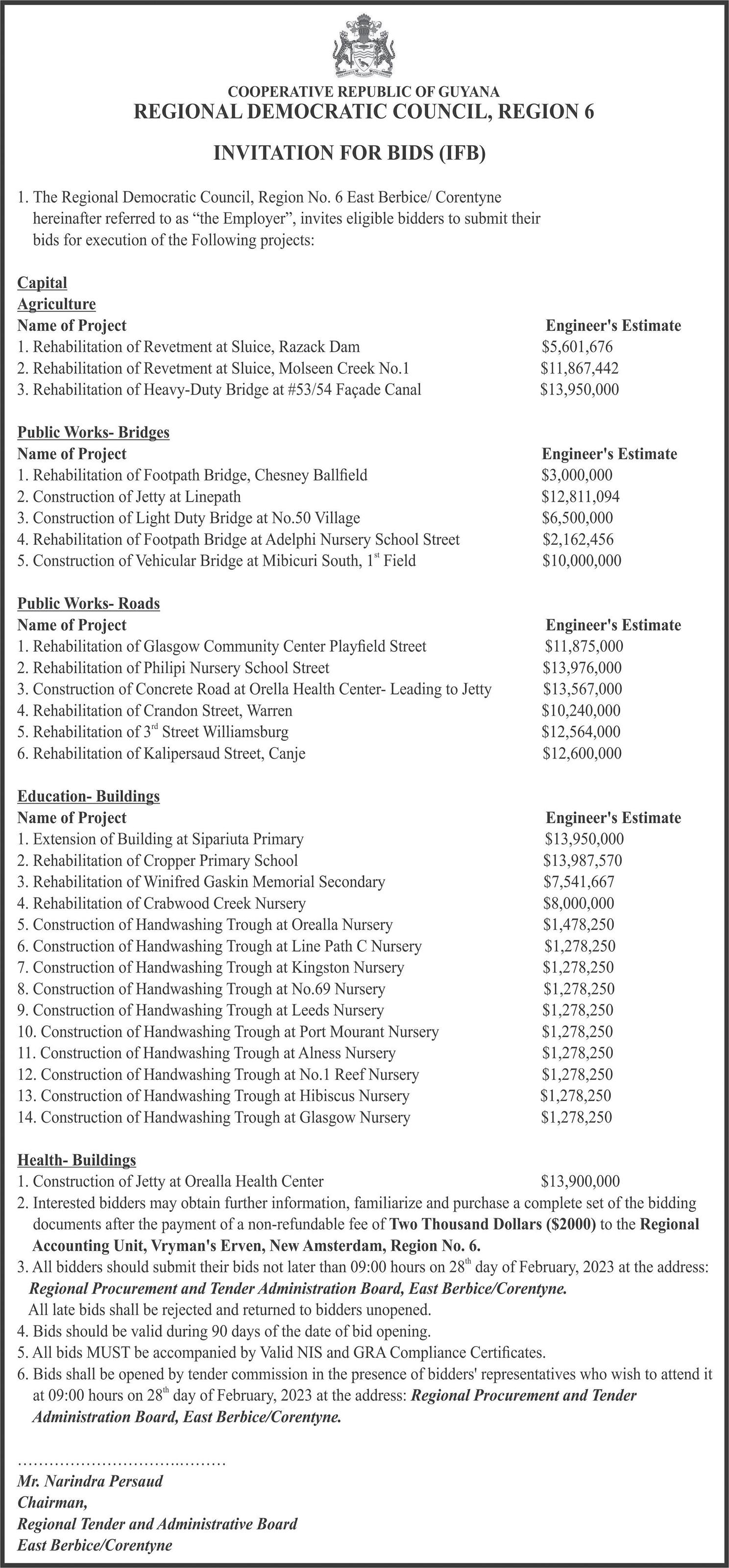
● Vulcanizing shops;
● Auto electrical/mechanical workshops;
● Facilities that store, treat or dispose of waste;
● Bodywork/spray painting operations;
● Rice processing plants;
● Mining activities (sand, bauxite, gold, diamond, rock, etc.);
● Pulp and paper processing
● Cement Production & bagging plants;
● Asphalt/bitumen plants;
● Paint and ink manufacturing;
● Extraction of forest resources;
● Petroleum exploration;
● Pharmaceuticals’ manufacturing etc.
NB. This list is not exhaustive!
What is an Environmental Authorisation?

An Environmental Authorisation is an Environmental Permit, a Prescribed Process Licence , Construction Permit, or an Operation Permit granted by the Environmental Protection Agency.
Why is an Environmental Authorisation necessary?
Apart from environmental authorisation being a legal requirement for certain types of developmental activities, it also provides major benefits to the environment, human health, and secures your investment. The process ensures that development is conducted in the most sustainable way possible, by mandating investors to identify the major impacts of an investment project and determine the best measures or alternatives that can be implemented to prevent or mitigate negative impacts.
Additionally, through the environmental authorisation process, it is determined whether or not an Environmental Impact Assessment (EIA) is needed before granting the Environmental Permit. This is another important process which is required to be completed by investors who are planning projects that will have significant adverse effects on environmental, social and economic well-being.

Reduce conflicts
An Environmental Authorisation has many long-term advantages, even for the investor; you will be guided on addressing impacts before they even occur. This helps to save time and money, as it prevents conflicts that may arise, not only between investors and authorities, but also between the investors and residents. An environmental authorisation also legally protects your investment.
Expired environmental permits
In order to continue to enjoy benefits of sound environmental management and economic growth, investors need to have their permits renewed. This allows the Environmental Protection Agency to continue monitoring project activities, to ensure that they are conducted in a sustainable manner . An application for a renewal must be made at least 6 months prior to its expiration date.
Environmental Authorisation protects the Environment… AND YOUR BUSINESS!
You can share your ideas and questions by sending letters to: “Our Earth, Our Environment”, C/O Communications Department, Environmental Protection Agency, Ganges Street, Sophia, GEORGETOWN, or email us at: eit.epaguyana@gmail.com. Follow us on Facebook and Instagram and subscribe to our YouTube channel.

only female on the batch at the time.
She spent 10 months at the college and during that time, she completed her work-study attachment at the Guyana National Industrial Cooperation. Joseph said she started working at the now-defunct Guyana Sawmills which was at Bartica at the time. “When I went to Kuru Kuru College I had no idea what I was getting into,” she reiterated.
“I was a school dropout,” she said, noting that she left secondary school in the First Form. She said after she completed the form to attend Kuru Kuru College, she wrote an exam and managed to attain good scores to gain
admission to the college.


Joseph said she chose welding as the programme she wanted to study and she noted that she had no clue what it entailed. “I just knew I had to do something,” she said. She said she was the
Male-dominated career Joseph, who is the 5th of 8 children, said that over the years she has managed to perfect the art of welding. She said she can weld anything with her blowtorch; she makes barbeque grills, computer desks, and grills for securing homes. In addition, she also welds large-capacity structures such as excavator buckets.

One of her most prized works occurred recently when she built a double-pontoon structure for a miner in
the hinterland. She said she hadn’t a clue how to start off building the structure when hired but she noted that she was confident that she would be able to assemble the structure. She toiled with the blowtorch; burning the iron, welding, and re-welding. And with the assistance of
two labourers, the structure was built and she even assisted the labourers in painting the structure upon completion. “I was praised for that job,” she noted.

Joseph said she doesn’t think there is a profession that a female cannot master. “I see myself as a welder, not just as a female weld-
er,” she noted. “Sometimes I am made out to be a threat to the male welders,” she noted.
She said she sometimes feels pressured being in the field given the notion that the job suits males. She said, however, that she loves the field and that she would enjoy working alongside the males in a workshop environment.
At the moment, Joseph works on projects for hire and some of the projects see her travelling into the hinterland to weld.
Advice Joseph said her mother is her biggest inspiration and she noted that one must always honour their parents. In addition, she said she believes anyone can succeed in life. “You can become anything you want to become. Just follow your dreams, blank out the negativity, you will have struggles, but keep your chin up, be focused and follow your dreams.”
The construction of a concrete bridge between Old Grove and New Grove, East Bank Demerara (EBD), is set for completion in March and is expected to alleviate traffic congestion during peak hours.
Minister within the Public Works Ministry, Deodat Indar on Friday met with the contractor responsible for the $157 million project, O&O General Contracting Service.
Once completed, the
project will provide an alternative route for traffic traversing between Great Diamond and the lower parts of the East Bank corridor. This will effectively reduce traffic congestion on the main Grove access road.
During his visit to the area, Indar also upbraided the contractors attached to the Grove road expansion project for the construction of concrete drains, as they failed to strictly adhere to the guidance provided by
the technical officials from the Public Works Ministry.

Minister Indar has called on the contractors to remove the overburden from the road shoulders and to work diligently towards the project's deadline.
“The Minister put the contractors on notice that they must clean up their act to reduce inconveniences to residents and motorists. Additionally, engineers on the project were instructed to issue let-


ters to residents who have placed derelict vehicles and other encumbrances on the parapet,” the Public Works Ministry stated.
Several developmental projects are earmarked or ongoing for the EBD. This year, it was announced that the Inter-American Development Bank (IDB) has approved some US$100 million to commence the Diamond/Grove-to-Timehri Road Project. The loan was requested through the IDB’s Programme
Resilient Infrastructure
Development. Under this programme, the Government will be looking to improve road safety, pedestrian infrastructure, and utility networks. The aim is to mitigate congestion and delays faced by commuters traversing the corridor.

The Government was utilising local funds to desilt all the drains and widen roads along the Diamond/Grove corridor.
Meanwhile, the
Government is working on creating an alternate route to mitigate traffic congestion along the East Bank Demerara corridor. Thus far, an alternate route has been rehabilitated for persons residing in the Diamond Housing Scheme to enter and exit through Avenues A and B, instead of the usual route at the Diamond Junction.
Another bridge will be constructed from Grove to allow persons to exit at Busbee Dam, Craig.
In the spirit of partnership and goodwill between Guyana and the United States, US Ambassador to Guyana, Sarah-Ann Lynch on Friday donated medical equipment and supplies to Health Minister, Dr Frank Anthony The medical equip -

ment, which includes adjustable hospital beds, diagnostic equipment, and patient care kits to the tune of US$33,000 was handed over to the Linden Hospital Complex.

This donation was made through the Department of Defense’s Overseas Humanitarian Assistance
Program and the United States Southern Command.
The donated equipment and supplies will support the Linden Hospital to provide quality day-today care to patients locally in Linden and throughout Region 10 (Upper Demerara-Berbice).
In her remarks, Ambassador Lynch reiterated the ongoing commitment the United States has to Guyana and its people.
“As Guyana works to make major advancements to its healthcare system and medical infrastructure in the near term, the United States Government is committed to the continued support of the people of Guyana and our incredibly strong partnership. The United States is committed to promoting prosperity inclusive for all of Guyana,” she said.
Minister Anthony noted, “This collaboration that we have with the US Government has been a very long one, and more recently during the pandemic, we have been able to enhance that collaboration.

There have been many instances of how we have been able to collaborate. This is just one of those opportunities where the US Government has been working with the health sector to enhance the services we are able to deliver.”
In addition, Regional Chairman Derron Adams stated, “I want to extend our most sincere gratitude for the continued robust partnership between the US Embassy Team, the Linden Hospital Complex, and the office of the RDC. I assure you all that the
RDC will continue to seek out and sustain opportunities like this one to bring much-needed services to the people of Region 10. We believe that collaboration like this one will activate a process where our region in the near future can experience additional benefits by developing innovative strategies, like research for emerging technologies, software implementations, training etc, for all categories of healthcare workers, so that we can identify gaps and opportunities.”

This latest donation is part of the United States’ ongoing partnership with Guyana’s health sector. The United States Government is proud to be a strong partner with the Government and people of Guyana in the fight against COVID-19.
The United States Government has donated 355,000 vaccine doses; oxygen generators valued at nearly US$500,000; provided five ultra-low refrigeration units for vaccine storage; medical supplies and other equipment valued at US$300,000; and provided strengthened port health surveillance, laboratory reagents for COVID-19 testing, and technical assistance for outreach campaigns to encourage preventative habits and overcome vaccine hesitancy to the tune of US$475,000.
Meanwhile, during his brief remarks, Minister Anthony expressed gratitude to the Government of the United States and the US Embassy for their steadfast and continuous donations towards the enhancement of health services in Guyana. Through these generous donations, he noted that Guyana has partnered with several US institutions namely, the US President’s Emergency Plan for AIDS Relief (PEPFAR) and Mount Saini.
In addition, he explained that through collaborative works with Mount Saini, the Ministry is expected to benefit from cardiovascular and oncology services locally, a well-strengthened primary and secondary healthcare service, and improved treatment for chronic disease across the country.
In closing, the Minister stated that the Linden Hospital Complex is expected to undergo substantial infrastructural improvements during the near future.
“Last month, we negotiated with the InterDevelopment Bank (IDB), and we were able to get a loan. The first phase of the loan amounted to US$97 million, and one of the hospitals that will benefit from the resources in the loan is the Linden Hospital Complex,” he said.
Asingle mother of five is seeking help to ensure that her children receive proper education so that they can have a brighter future.
Thirty-nine-yearold Yonette Chesney of Savanah Park Squatting Area, Region Six (East Berbice-Corentyne), has undergone two surgeries since she was diagnosed with diabetes two years ago.

Prior to finding herself in this position, Chesney made a living as a domestic worker and by providing hair care services. Now, she is unemployed.
“I went in the hospital for about three weeks until this finger heal up and then my back, I do surgery two times for abscess. I still going to the hospital every day from Monday to Sunday.
Some days, I does walk if I ain’t get money; some days I does catch car. Walk and go and walk and come back. I would go by my mother and she would give me food and I would stay there til af-
ternoon then I would come home back.”
The woman said she struggles to send her children to school. She gets some assistance from her mother and sister, even
though her mother has now retired.
One of her three children that attend school lives with a speech impediment and attends the Special Needs School.
The children are aged 19, 18, 17, 15, 8. The 18-year-old lad attends the New Amsterdam Technical Institute while the 19-year-old female is pregnant. None of them work. Chesney said her only source of income is the Public Assistance she receives of $14,000 monthly.

Unable to work, Chesney said she still has to provide for her children, including ensuring that they are capable of completing school assignments.
“My lil daughter, when she get assignments, does got to go to the internet (café) and print it out, but that and all hard because some days I don’t get money fo she go and do it.

“She had assignment last week and I had no money, so she didn’t get to do the assignment…”
“It is hard on me as a sin-
gle parent; her father don’t help me with anything…”
The woman is hopeful that help will come her way soon.
“I does say to God, you don’t be one way all the time; one day I will rise and my children will rise and we will live happy.” In fact, she is pleading with persons to help her family, particularly the children.
“I can’t afford a battery lamp, so I does light candles in the night – it hard, real hard.”
“Me and my five kids, we get one mattress; it is not all of that big so I does sleep in the chair because the mattress isn’t all of that big to hold all six of us.”
Anyone who wishes to assist the family is asked to contact Chesney on telephone numbers 689-6685; 6718962 or 6978670.



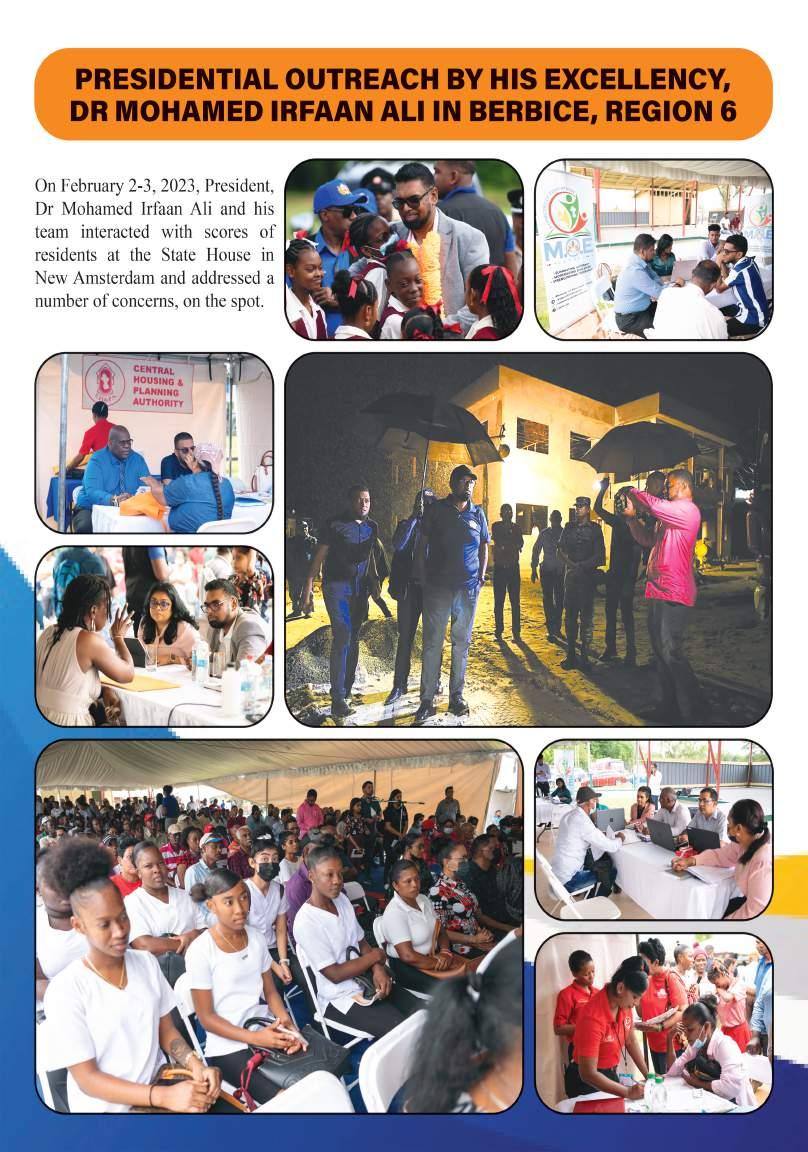
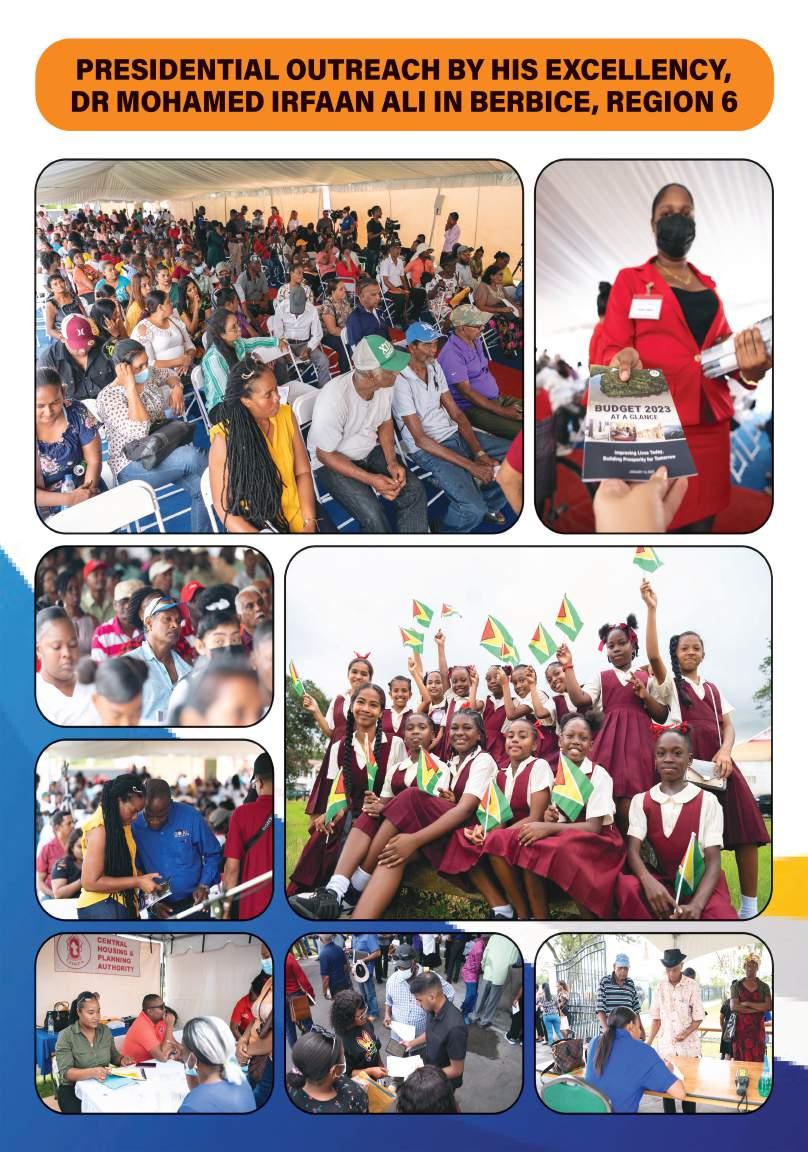

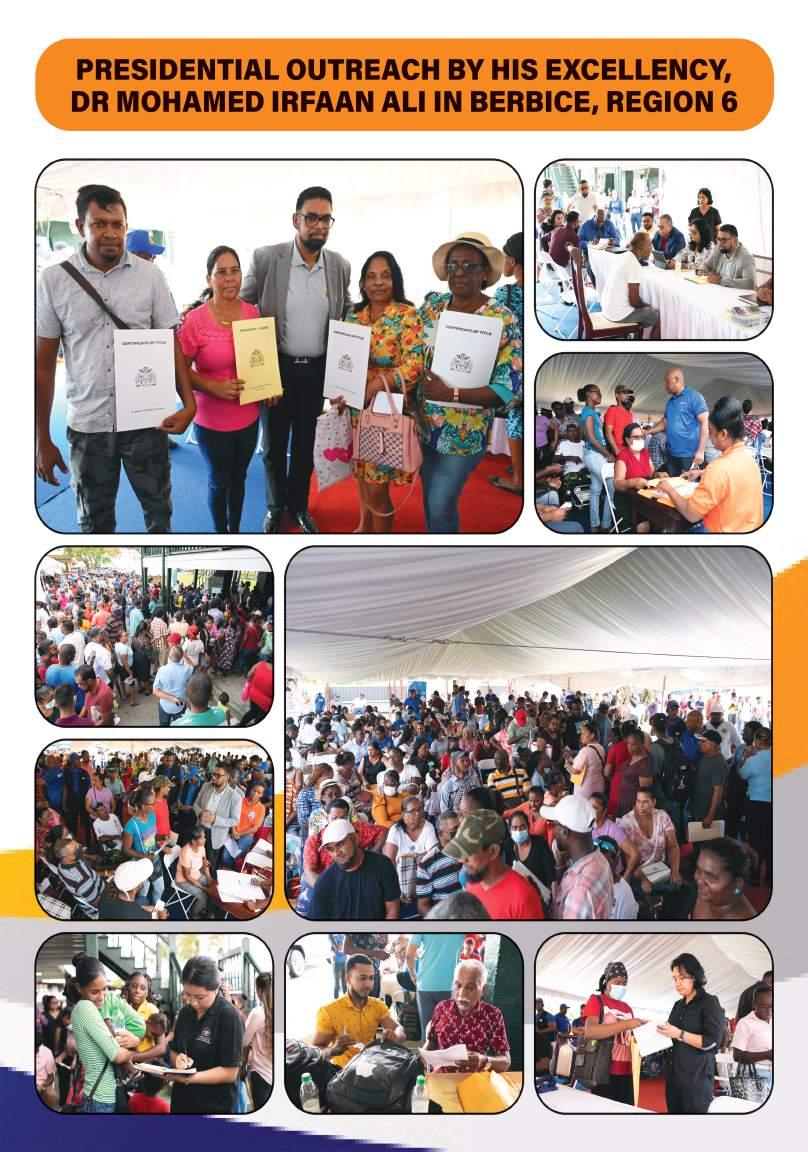


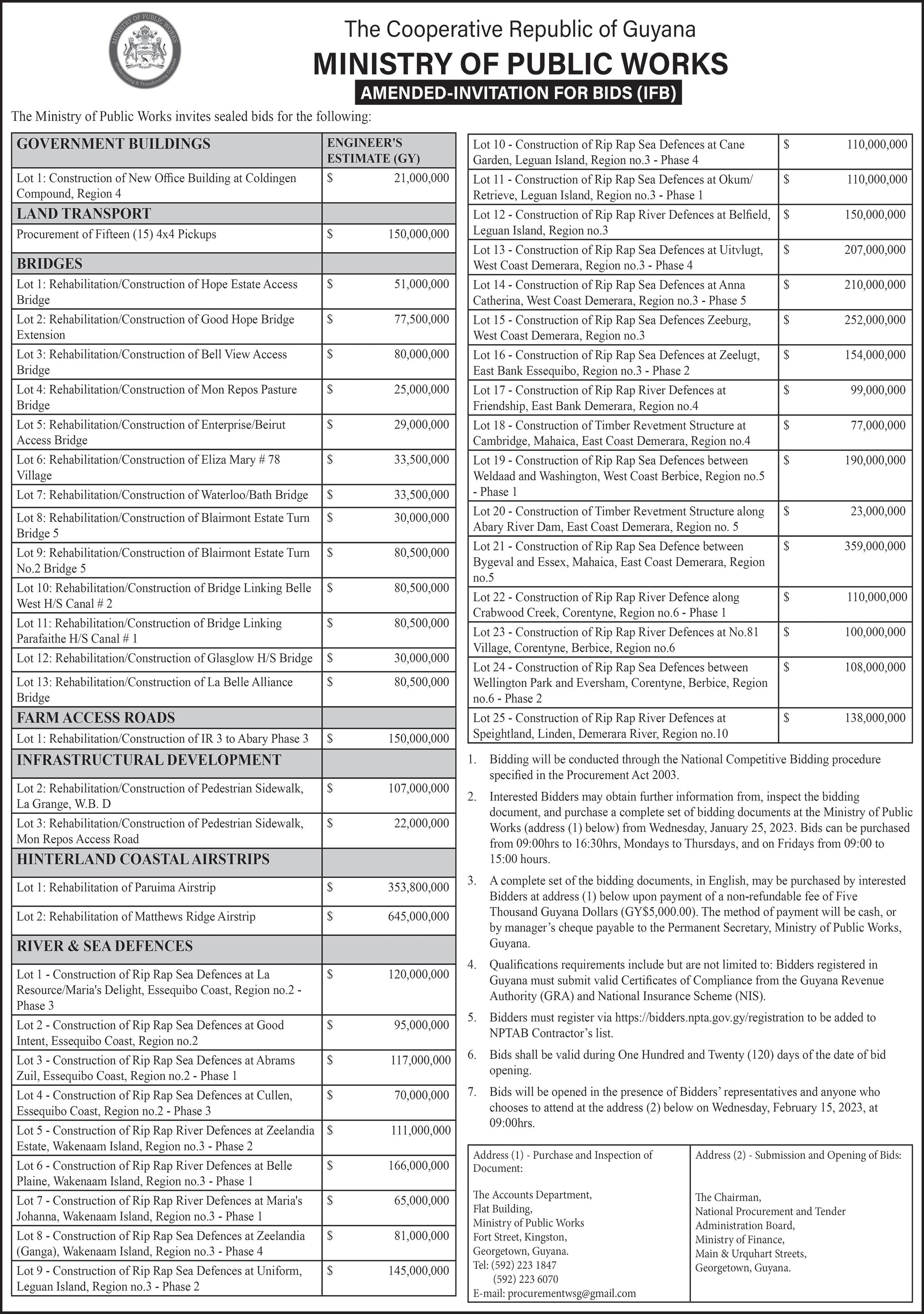


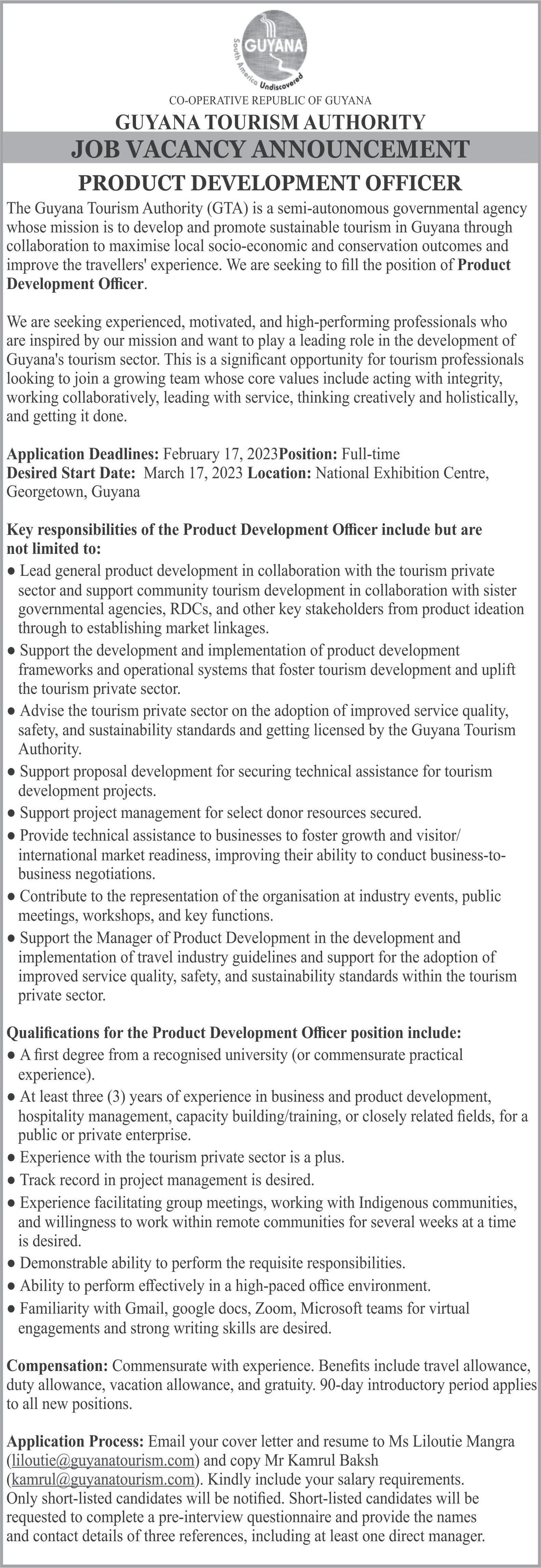

The Upper Mazaruni District Council (UMDC) has filed with the Guyana Court of Appeal an appeal with respect to parts of the High Court’s ruling, which affirmed the long-held contention that Indigenous Peoples have collectively occupied the Upper Mazaruni area since time immemorial.
The decision was rendered by Chief Justice Roxane George on December 16, 2022, some 24 years after the case had been filed. In her judgement, CJ George found that the Akawaio and Arecuna peoples of the Upper Mazaruni have occupied the lands “since time immemorial” – an affirmation for which the UMDC is happy.

The decision to appeal parts of the CJ’s judgement comes following the Land Conference held by the Upper Mazaruni District Council on 24-25 January 2023, wherein leaders, elders and residents of the eight Indigenous villages of

the UMDC met in Phillipai to discuss the way forward, and to celebrate the affirmation of their occupation of the Upper Mazaruni District.
“On January 27, our lawyers at Hughes, Fields and Stoby filed the appeal with the Guyana Court of Appeal; and, as a collective, we hope the hearings can be expedited, given that the High Court took

24 years to deliver a judgement. We believe that the Indigenous Peoples of the Upper Mazaruni deserve a swift hearing of (their) appeal,” the UMDC has said in a release to the media.
The appeal was made on the following grounds:
1). That the “Learned Trial Judge erred in fact and law when Her Honour found that, notwithstanding the fact that the Appellant/ Plaintiff had proved and established their occupation of the subject land from time immemorial by showing a substantial connection between the Akawaio and Arekuna Peoples and the said land, the State and/or Government of Guyana still possessed radical or ultimate title to the said lands, and particularly made the following errors in Her judgment.”
2): That the “Learned Trial Judge erred in law in failing to take judicial notice of, and take into consideration, the Roman Dutch legal underpinnings in Guyanese Property Law,
under which the State does not hold radical title to lands, although it retains sovereignty over the lands.
3): That the Learned Trial Judge erred in law in concluding that the State had radical title to the subject lands without there being any evidence of, or the Learned Trial Judge accepting evidence which inferred, the acquisition of radical title by the State.
4): That “The Learned Trial Judge erred in law by refusing to recognize that the Akawaio and Arekuna Peoples' aboriginal title was to the exclusion of all others, despite finding that they were the exclusive occupants of the subject land at the time sovereignty was acquired by the Crown.”
And 5): That “The Learned Trial Judge erred in law and fact in refusing to grant compensation to the Appellants/Plaintiffs for impairment of the rights of the Akawaio and Arekuna Peoples.”
The decision to file the appeal was taken af-
ter leaders of the villages that comprise the Upper Mazaruni District Council - Kamarang/ Warwatta, Kako, Waramadong, Paruima, Jawalla, Chinoweing /Wax Creek, Omanaik/Kambaru and Phillipai - met during a two-day land conference in which they engaged elders and residents in intense discussions of the High Court’s ruling.
The leaders were joined by attorneys-at-law Sidonia Hamilton and Ronald Daniels of the Hughes, Fields and Stoby Law Firm, which represented them during the legal battle.
During that conference, toshaos and elders expressed satisfaction with Chief Justice George’s finding that these Indigenous Peoples have been in occupation of the lands since time immemorial, but they took umbrage at the Government referring to the residents as “nomadic” during the trial.”
The villages also outlined their struggles in get -
ting the Government to recognise their right to the Upper Mazaruni territory. “Villagers and leaders spoke of how mining has destroyed our ways of life, and encroached on titled and customary lands. The destruction of the Mazaruni River as a result of Government-sanctioned mining was also highlighted during the meeting,” the UMDC added.
Moreover, during the conference, leaders recognized their role in mining, and pledged to be more cognizant of the effects, moving forward.
Upon conclusion of the land conference, a meeting of the UMDC was held in which plans were discussed for the usage and protection of the Upper Mazaruni territory, along with other issues pertaining to its development as a district.
The UMDC has resolved that “As a District Council, we will continue holding such forums to ensure that our people are adequately and sufficiently informed.”
‘Paddy bug’ or ‘stink bug’.
Farmers utilise the spraying of insecticides for the control of these pests, which can result in pesticide residue remaining in the rice grains; however, if present in air, soil and water, it can pose a serious threat to biological diversity and human health.
Recognising the threat posed, the EU has set Maximum Residue Limits (MRL) for the different pesticides at different levels.
in which cohesion, wellness, mental health—all can be addressed through these initiatives.”
He reminded that previously, the Skeldon waterfront site had been filled with the unwanted waste, but through the beautification project, that waste has been removed, and the space was enhanced to improve the landscape.
Rice farmers are advised to protect their rice crop and at the same time, protect the European Union (EU) market by complying with the Maximum Residue Limits (MRL) for various pesticides at different levels set by the EU.
EU is Guyana’s largest export market, with 48 per cent and 46 per cent of

Guyana’s rice being sold to the EU in 2021 and 2022, respectively.
The Guyana Rice Development Board (GRDB) in an advisory stated that one of the major challenges of the rice industry in Guyana is the damage caused by insect pests, especially the Oebalus poecilus (Dallas) commonly known as the
As such, the GRDB is advising farmers that it is necessary to protect the major rice market by following the guidelines and implementing the Integrated Pest Management (IPM) programme.

Farmers must strictly stick to the recommendations and only apply recommended pesticides following the guidelines provided for the management of the ‘paddy bug’ or ‘stink bug’.
Residents of Skeldon and surrounding areas can expect to benefit from a conducive space where they can relax, enjoy nature, and bond with their families, friends, and other members of the community, with the completion of the ‘Green Space’ later this year.
The initiative is being executed through the Office of the First Lady and the Public Works Ministry at the Skeldon waterfront and will offer persons the opportunity to connect with each other through increased quality time.

President, Dr Mohamed Irfaan Ali said on Friday morning during a visit to
the location, “As you can see, there is a more modern-looking style overlooking the water, there’s a utility building, there’s a huge fountain area, there’s a play area for kids, and the entire lawns will be manicured. We have seating accommodations for children and families out on the water.
“So, if you know what is happening in Windsor Forest, it’s a very simple project, but thousands of families, hundreds of children every single day go out there. And this is important in building communities, building stronger families, bringing people together and creating that environment and that atmosphere
“So, this is one. I just wanted to give an update. It will be well-lit, it will have adequate security, and this will no doubt enhance the entire area, and create another public space for children and families, and the community to enjoy,” Dr Ali stated.
He expressed his pleasure with the work being done at Skeldon, and noted that this and multiple other beautification projects are being completed through the involvement of the Men on Mission (MoM).

In October, First Lady Arya Ali officially launched the Skeldon beautification project, and a second in New Amsterdam, Region Six. The two projects cost $100 million each.
The overall aim is to establish family-friendly recreational spaces in every region.

Over 200 fires across Region Six (East Berbice-Corentyne) have led the Government to consider new strategies, among which is a new fire station in the township of Rose Hall.
This was according to President Irfaan Ali during his press conference on Friday, after wrapping up a two-day outreach to the region last week.

“In the region, I think we have had more than 200 fires last year. This is something that is concerning for us. We have to do an education programme and we have to address this. The Rose Hall area is a major aspect that we have to work
with in expanding capacity, maybe a new station to cover that huge aspect that includes expanded residential and commercial zones.”
Among the activities done during the outreach was an inspection of hydrants. Out of 20, 10 are working while the others
are under immediate repairs. Inter-agency efforts will see hydrants being introduced in developing areas.
“We’re hoping that they can bring those into operation within the next month. I know the Ministry of Housing and Water is going to work closely with the Guyana Fire Service in expanding hydrants in the new areas. We’re also looking at mapping water catchment areas to support the Fire Service and having those areas clearly designated,” Ali indicated.
Fire stations had been previously planned for new townships – Mabaruma, Region One (Barima-

Waini); Mahdia, Region Eight (Potaro-Siparuni) and Lethem, Region Nine (Upper Takutu-Upper Essequibo). The Guyana Fire Service (GFS) was also getting ready to build a fire station in Wismar, Linden, Region 10 (Upper Demerara-Berbice).
Collectively, the fire stations in the county of Berbice: New Amsterdam and Rose Hall Town, which are in Region Six (East Berbice-Corentyne), and Onverwagt in Region Five (Mahaica-Berbice) make up the Berbice Fire Division.
Meanwhile, during the outreach, some 200 cases relating to the National Insurance Scheme were ad-

dressed, with some 40 per cent already resolved.
The President shared, “This is an area that is of grave concern in the region also. They dealt with almost 200 cases, and about 40 per cent are already resolved. There is another 20 per cent that is in the process of being resolved. The remainder would have follow-up action to be resolved.”
Along with NIS, the Guyana Revenue Authority (GRA); National Drainage and Irrigation Authority (NDIA); Guyana Lands and Surveys Commission (GL&SC) also rectified a number of cases that were raised by citizens.


Overweight children can face many difficulties. They may feel different from other children, and this can affect their confidence. They can also be subjected to bullying from other children. This may make parents feel worried about their children taking part in an everyday activity such as school sports. Unfortunately, this cycle can make weight control more difficult.
Although health problems are less common in childhood, children who continue to be overweight into adulthood are at greater risk of developing:
• High blood fats and heart disease

• Type 2 diabetes
• High blood pressure

• Stroke
• Joint problems
• Breathing problems
• Some forms of cancer.
It is rare for a medical
condition to cause a child to become overweight, but always check with a doctor concerned.

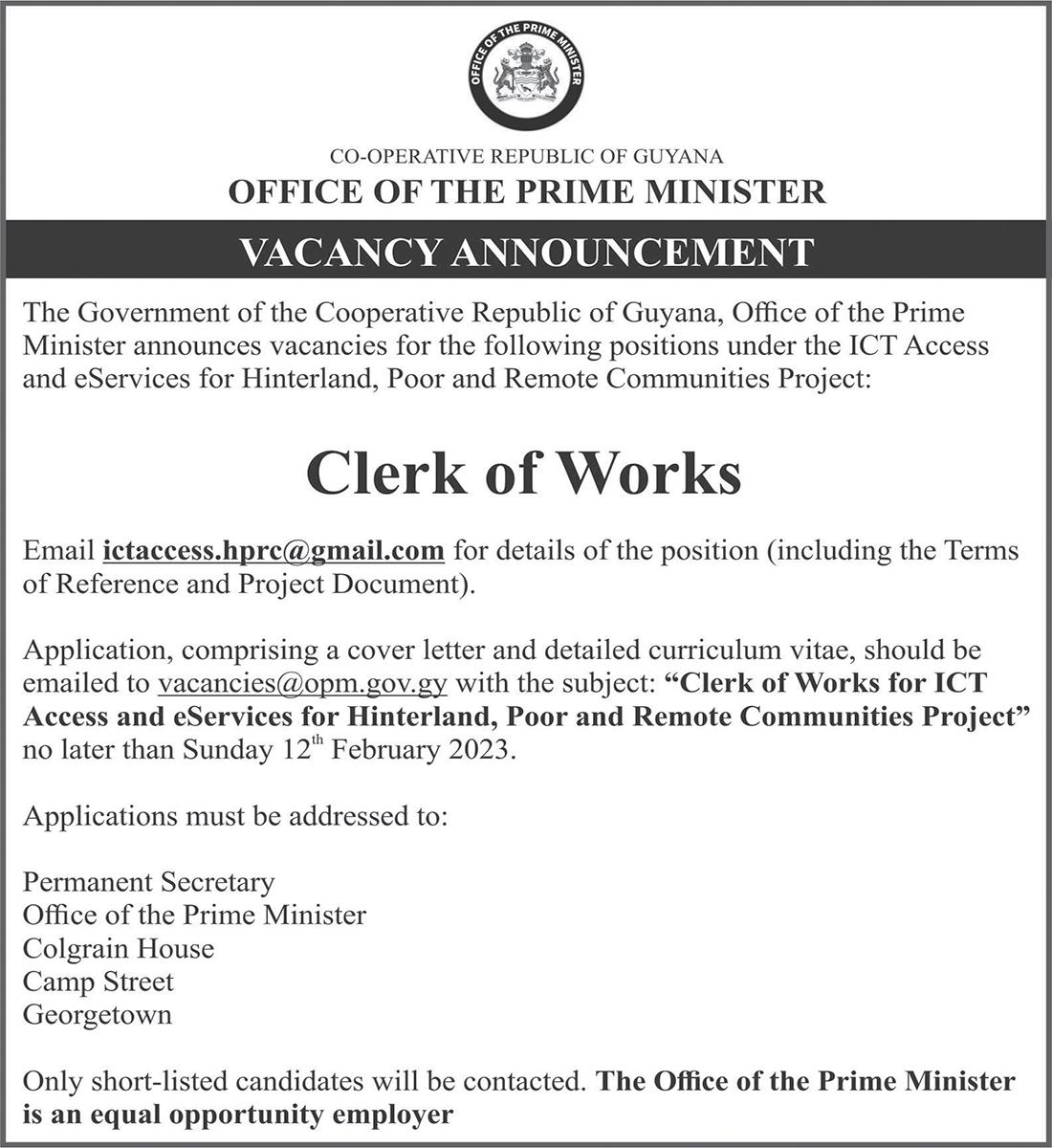
If a child is overweight, it is important to seek the advice of a health professional. Young children should not be on diets that severely limit food intake. Parents and guardians may be advised to make permanent changes to their family’s lifestyle and eating patterns. Everyone at home should be involved in these changes, regardless of body weight, so that no child feels singled out. Making the right changes will protect children from developing eating and dieting problems later in life.
It may take a number of attempts before children are happy to change their food choices, or become more active. This can be frustrating for parents who have their children’s best interests at heart. Don’t give up. Remember to stay positive. Children who are overweight need to know that they are loved and are important, regardless of their weight.
A healthy diet is not only the type of food a child eats, but also the amount of food they eat. All children should eat regularly, including healthy snacks. Good nutrition starts early in life. Wherever possible, try to: Breastfeed.
• Introduce solids at around six months.
• Encourage a wide variety of nutritious foods. No particular food should be forced or overly restricted.
• Consider using reduced-fat dairy products after two years of age.
• Offer mostly cereals, grains and bread, vegetables and fruits, with moderate amounts of meat products and dairy foods.
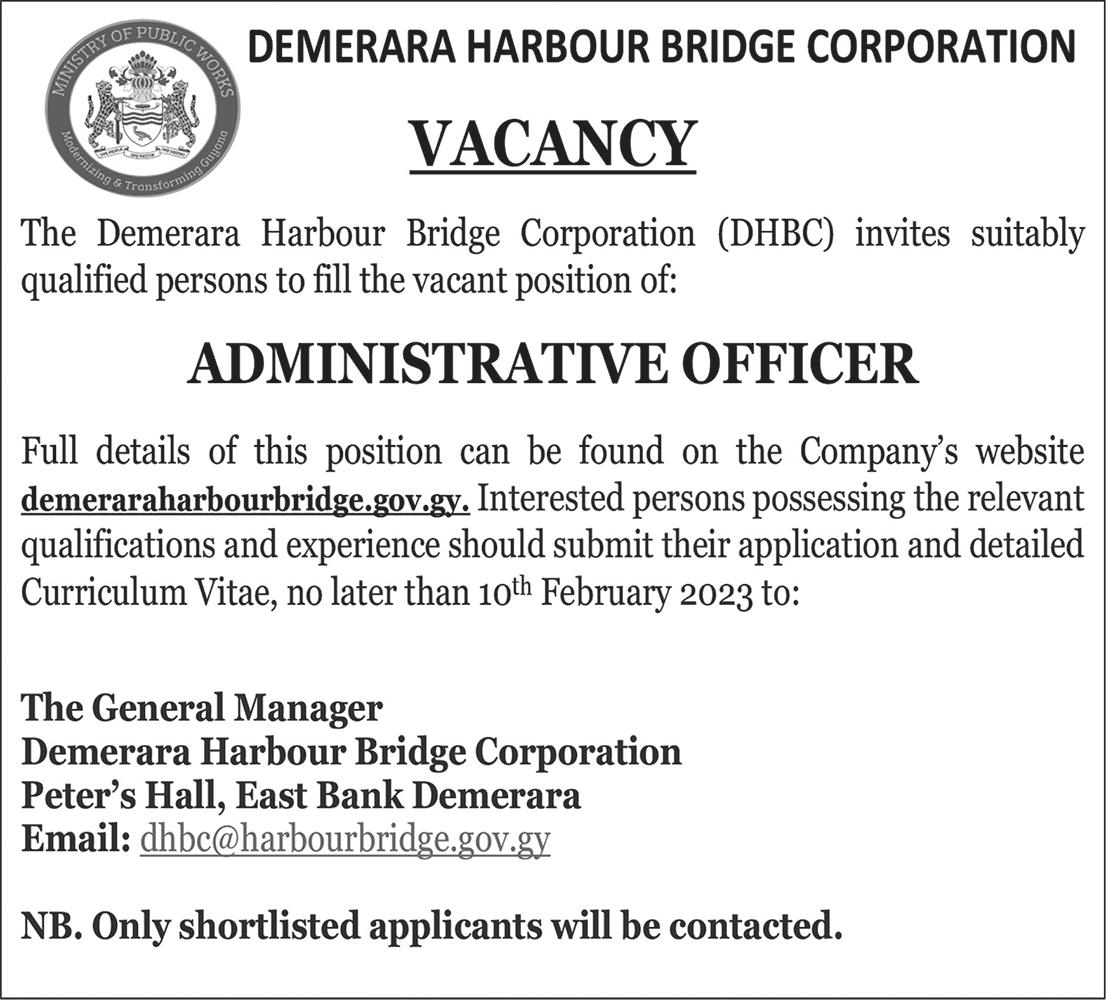
• Use added fats (such as oil, margarine, and butter) in small amounts.
• Offer fresh vegetables and fruit, instead of processed snack foods.
• Include small amounts of treats such as cakes, chips, or takeaway foods occasionally (once or twice per week). Enjoy them as a family.
• Offer children water when they are thirsty. Sweet drinks, including juice, cordial and soft
drinks, are not necessary, and can contribute to tooth decay.
Suggestions include:
• Buy, prepare, and offer the foods we would like our children to eat. Allow them to choose what, and how much, of these foods they will eat.
• Keep offering healthy foods, even if they are refused at first.
• Include a child’s food choices in the family menu sometimes.
• Act as a role model. Make sure the child sees us eating healthy foods.
• Involve children in simple food preparation, such as making a salad.
• Let the child decide if they have had enough, even if food is left on their plate. This encourages children to better understand feelings of hunger and fullness. These habits may help to control appetite, and prevent overeating as they grow.
• Encourage slow
eating if it is a family of fast eaters. Put the knife and fork down between mouthfuls. Offer crunchy foods that need lots of chewing.
• Help the child recognize if he or she eats when bored, sad, or lonely. Try to suggest another activity to help distract them.
• Try not to punish, reward, or cheer a child up with food. It can be tempting to use food this way sometimes, but it establishes an unhealthy relationship with food.
FUN FAMILY ACTIVITY
An active lifestyle is important for the whole family, regardless of the age or weight of family members. Physical activity helps to build skills, makes us feel better, and helps to protect us from many lifestyle diseases.
Activity should be fun, without focusing only on competition or skills. To keep children active as they get older, they may need help from their parents to include physical activity in the family routine.
ty that the child enjoys and that is fun, readily available, affordable, and matches the child’s age and skill level. Ask the child’s physical education teacher, childcare worker, community centre, or other parents about options.
• Be supportive and encouraging. Some children feel embarrassed and uncomfortable about their physical skills or appearance.
• Motivate children to be active – even though it’s not always easy. Remember, if a child gets hot, puffed, and sweaty when active, this is generally a good sign that they are working their bodies and getting some benefit from the exercise.
Television and screen viewing
Watching too much television is linked closely with being overweight in children. When children watch TV, they are not being active. They are also more likely to see food advertisements that encourage them to eat, whether they are hungry or not.
Suggestions include:
TIPS
Be active together. Let the child see us being active too.
Encourage lots of free playtimes outside.
Try to use the car less. Walk or cycle to school, the shops, or to a friend’s house. Help the child find a balance between organised sports, fun activities, and individual sports like swimming and dancing.
Find an activi -

Limit sedentary activities like TV viewing, watching videos, playing personal screen games, and using computers. These activities should total no more than two hours a day for children five years and older, and no more than one hour per day for children aged two to five years.
Avoid eating while the TV is on. This may be a distraction from family time together.
Everybody “Needs to Act” now to help our kids stay healthy for a better future!
Western economies agreed new price caps on Friday on Russia's exports of oil products that US Treasury Secretary Janet Yellen said would build on the crude oil cap set in December and further limit Russian oil revenues while keeping global energy markets supplied.
The coalition imposing the measures, the Group of Seven economies, the EU and Australia, set the new price caps at US$100 per barrel on products that trade at a premium to crude, principally diesel, and US$45 per barrel for products that trade at a discount, such as fuel oil and naphtha.

The price caps, together with a European Union ban on Russian oil product imports that also comes into force today, seek to limit Moscow's ability to fund its war in Ukraine, which began nearly a year ago.
"The caps we have just set will now serve a critical role in our global coalition’s work to degrade Russia’s ability to prosecute its illegal war," Yellen said in a statement after the agreement was released.
The move followed the coalition's Dec 5 banning of the use of Western-supplied maritime insurance, finance and brokering for seaborne Russian crude oil priced above US$60 per barrel.
Yellen said the sanctions and price caps are forcing Russian President Vladimir Putin to "choose between funding his brutal war or propping up his struggling economy."
Russia's monthly budget revenues from oil and gas fell in January to their lowest level since August 2020 under the impact of Western sanctions on its most lucrative export, Russia's Finance Ministry data showed on Friday.

This month, Russia plans to boost diesel exports in an attempt to cope with the EU embargo, price cap and lack of tankers, data from traders and Refinitiv showed.
Yellen said global energy markets had remained wellsupplied and public reports indicated that oil importers such as China and India were using the price cap to "drive steep bargains" on Russian oil.
The measures are disrupting Russia's military supply chains, "making it harder for the Kremlin to equip its troops and continue this unprovoked invasion," Yellen said.
In February last year Putin ordered what he called a "special military operation" in Ukraine to protect Russian security.
The International Monetary Fund this week raised its 2023 growth projection for Russia by 2.6 percentage points, citing "fairly high" export revenue last year and strong fiscal stimulus from Moscow.
A senior Treasury official told reporters that while Washington was mindful of the IMF's view, it remained convinced that the price caps were "changing the trajectory" of Russia's budget because petroleum was the main source of revenues. (Reuters)
Ukraine has released dozens of Russian soldiers as part of a negotiation brokered by the United Arab Emirates (UAE), Russia’s Defence Ministry has said, the same day 116 Ukrainian servicemen were also freed as fighting rages in the eastern city of Bakhmut.
“A complicated negotiations process resulted in 63 Russian servicemen returned from the Ukrainian territory”, the Ministry said on Saturday, as quoted by TASS news agency. It added that people of a “sensitive category” were also included in the deal, thanks to the mediation of the Gulf country.
The Ministry did not provide details on who falls within the “sensitive” group, but experts say that in past exchanges it referred to a
wide range of people, including spies and civilians holding sensitive information.
All of the released soldiers are currently in Russia, the Ministry said, adding that they were being given medical aid and access to contact their families.
The UAE maintains close ties with Moscow and remains one of the countries not supporting Western sanctions against Russia.
Last October, President Sheikh Mohammed bin Zayed Al Nahyan (MBZ) and Russian President Vladimir Putin met in Saint Petersburg where the Russian leader described relations between the two countries as “an important factor of stability”.
While the Russian Ministry did not refer to the event as a prisoner exchange
Ukrainian prisoners of war (POWs) posing for a picture after a swap in an unknown location in Ukraine in this handout picture released on February 4, 2023 [Press Service of the General Staff of the Ukrainian Armed Forces/Handout via Reuters]

in its comments on Saturday, later the same day Ukraine’s presidency confirmed the release of 116 Ukrainians, in-
cluding fighters caught in the battle of Mariupol and Kherson. (Excerpt from Al Jazeera)

After eight years of economic crisis, Venezuela's economy is showing a few signs of recovery. But as BBC News Mundo's Norberto Paredes reports from Caracas, while some of those living in the capital's poorest neighbourhoods are trying to make the most of the new opportunities opening up, many have yet to feel the benefits of the apparent economic rebound.
Foregoing the traditional party held in Venezuela when a girl turns 15, Aray decided to use the money gifted to her by friends and relatives to "help my mum and family make money".
She set up a little ice cream parlour where she sells sorbets at prices ranging between US$2 (£1.63) and US$8 (£6.51).
Venezuela's national currency is the bolivar, but
US military fighter aircraft shot down a suspected Chinese spy balloon as it floated off the coast of South Carolina on Saturday, drawing to a close a dramatic saga that drew a spotlight on worsening Sino-US relations.
"We successfully took it down, and I want to compliment our aviators who did it," President Joe Biden said.
The shootdown came shortly after the US Government ordered a halt to flights around the South Carolina coast due to what it said at the time was an undisclosed "national security effort."
Washington has called the balloon a "clear violation" of US sovereignty.
Defense Secretary Lloyd Austin first announced the shootdown, saying the balloon was being used by China "in an attempt to surveil strategic sites in the continental United States."
Biden on Saturday said he told the Pentagon on Wednesday to shoot down the Chinese spy balloon as soon as possible.
A Reuters photographer who witnessed the shootdown said a stream came from a jet and hit the balloon, but there was no explosion. It then began to fall, the photographer said.
Military leaders earlier this week had recommended against shooting down the balloon when it was over Montana due to the risk of falling debris, officials said.
China expressed regret that an "airship" used for civilian meteorological and other scientific purposes had strayed into US airspace.
China's Foreign Ministry said on Saturday that the flight of the "airship" over the United States was a force majeure accident, and accused US politicians and media of taking advantage of the situation to discredit Beijing.
(Excerpt from Reuters)
during a four-year period of hyperinflation, it became almost worthless.
While the government says that the yearly inflation rate dropped from 686% in 2021 to 234% in 2022, it remains one of the highest in the world.
Unsurprisingly, those who can try to get hold of more stable foreign currencies instead. But strict foreign currency controls put in place by former President Hugo Chávez meant that until recently they were beyond the reach of most Venezuelans.
A loosening of the currency controls in 2019 by Nicolás Maduro, Chávez's successor in office, has led to what some call a de-facto dollarisation.
But this has created a two-tier society in which
the minority of Venezuelans who are paid their salaries in dollars, or who receive remittances from relatives abroad, can afford luxuries which those paid in bolivars can only dream of.
The minimum wage for workers in the public sector - Venezuela's largest em-

ployer - is 130 bolivars per month (about $6; £4.85), which means that Aray's sorbets are only affordable to a select few.
Nevertheless, the government has been boasting about the economic growth the country is experiencing.
(Excerpt from BBC News)

A16-year-old girl has died after being attacked by a shark while swimming in a river in Western Australia.
She was pronounced dead after being pulled from the Swan River, in the Perth suburb of Fremantle, on Saturday.
It is believed the girl, from Perth, was riding jet skis with friends on the river when the incident happened.
Insp Paul Robinson, from Western Australia Police, said it was possible the girl had jumped in the water to swim with dolphins seen nearby.
He described the incident as "very, very traumatic" and the family of the girl was "absolutely devastated by the news".
People have been urged to take "additional caution"
and to abide by any beach closures.
Fisheries experts say it is unusual to find sharks in that part of the river, Robinson said.
This is believed to be the first fatal shark attack in the Swan River since a 13-yearold boy was killed in January 1923.
Australia typically records about 20 shark attacks
each year, with most in New South Wales and Western Australia.
There were two fatal shark attacks in 2021, and seven in 2020.
Historically, dying from a shark bite is not common. In more than a century of records, Australia's shark attack mortality rate is 0.9less than one person per year.
(BBC News)
ARIES
(March 21April 19)


TAURUS (April 20May 20)
GEMINI (MAY 28June 20)


CANCER
Challenge yourself, socialize and do something entertaining. A positive outlook will pay off. Don’t let anyone pressure you into something you don’t want or can’t afford.
Don’t take on a project that doesn’t suit you. Put your effort into something that makes you feel passionate. Don’t be afraid to voice your opinion, follow your heart and do your own thing.

Digest what’s happening around you. Discuss your thoughts and intentions with someone who encourages progress but helps you keep your feet planted firmly on the ground.
Hit the reset button and fix what you don’t like. Make simple decisions, be direct and stay within budget. A lifestyle adjustment will be a game changer. Relax with a loved one.
Money matters will require attention. Address shared expenses or ventures that aren’t reaching your desired goals and cut your losses. New opportunities are heading your way.
VIRGO (Aug. 23Sept. 22)




LIBRA (Sept. 23Oct. 23)


SCORPIO (Oct. 24Nov. 22)







Chase your dream. A change will encourage you to use your skills as you intend instead of how someone else wants. A social event will put things in perspective and help build your confidence.
Set a budget and you’re your cash. If you want something new, try honing a skill that can lead to a higher income. Sign up for a course or team up with someone who can help you.
Make a difference by reaching out to community members for help. Present an innovative plan, and you’ll drum up interest. Don’t let a loved one entice you into buying something you don’t want.
SAGITTARIUS (Nov. 23Dec. 21)




CAPRICORN




(Dec. 22Jan. 19)
(June 21July 22) (Jan. 20Feb. 19)





Observe what others do and say, but don’t bend to someone’s emotional whims. Take pride in what you do and believe in your ability. Home investments will pay off.
Don’t let what others do disrupt your day. Continue with your plans and clear space at home for projects you want to pursue. Avoid a social event if it poses a health risk.
AQUARIUS
Keep busy, contain your emotions, listen attentively and be the one to make a difference. Improving your space to fit your family’s needs will help create a satisfying day.
PISCES

LEO (July 23Aug. 22) (Feb. 20Mar. 20)






If you distort a situation, you will look bad when the truth is made public. Face facts and deal with mistakes openly to avoid setbacks. An old friend will shine a light on your situation.


Teachers of schools providing special education needs (SEN) in Guyana: the David Rose Special School, New Amsterdam Special Needs School, Diamond Special Needs School, Linden Centre for Special Children, and the Schoonord Centre for Children with Diverse Needs,
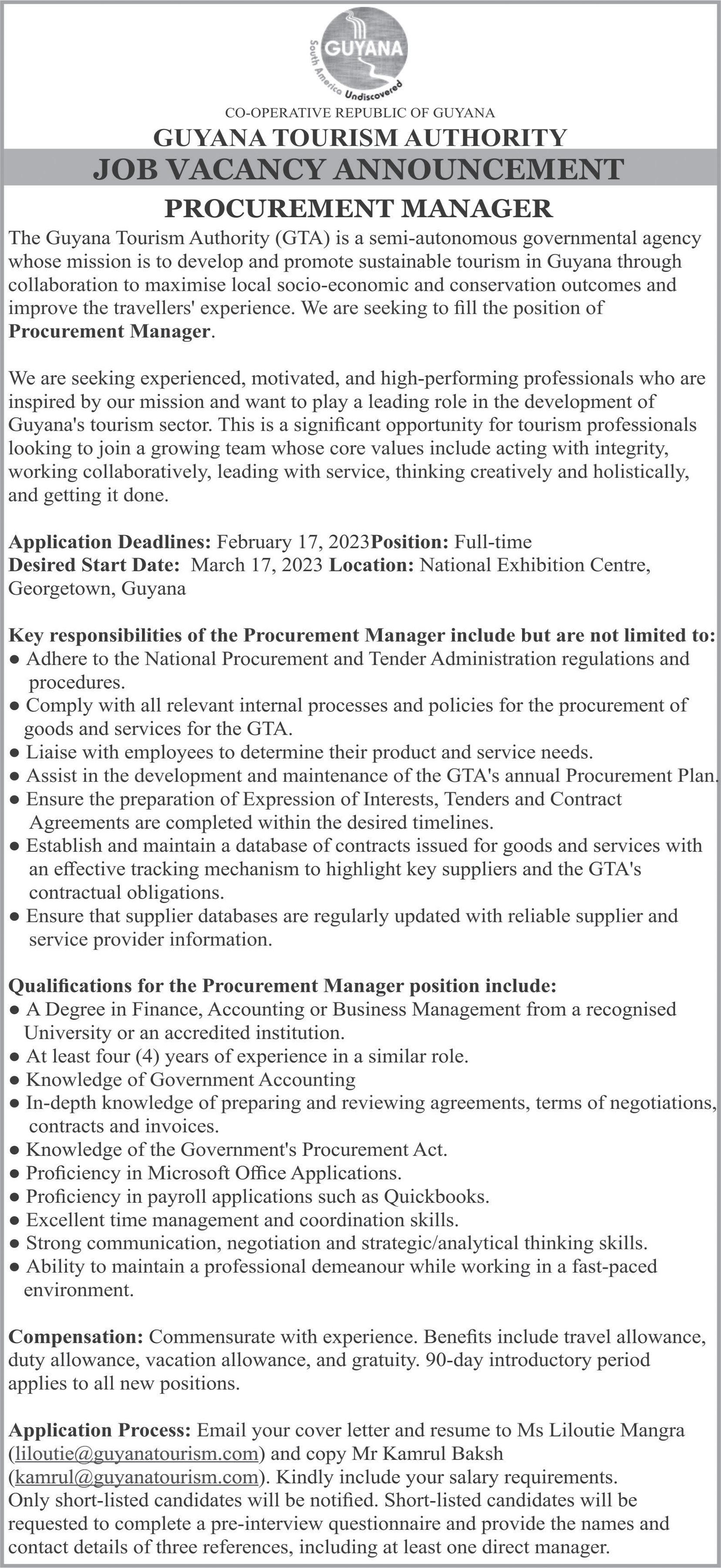

won by Tineisha Isaacs of the New Amsterdam Special Needs School with two points.
Notable performances were recorded by Oxana Cox of David Rose Special School, Sarah Ramkarran and Nakita Grannum of Diamond Special Needs School, and Fiona Phillips of Schoonord

Chief Education Officer for Disability, in remarking on the positive programme and the importance of chess in the development of individuals, applauded the efforts of Sabine McIntosh and the GCF, and anticipates growth of the programme in other institutions in Guyana.
excellent job done in organizing the event, and also tasked the SEN teachers with the job of teaching chess and spotting talent within their student bodies.
Twelve-year-old Anaya Lall, a player who has a hearing impairment (deaf), has been playing chess for several years. She was also present to lend a hand at the event.
Anaya represented Guyana on the women’s team at the 44th FIDE Chess Olympiad in India in 2022.
The Guyana Chess Federation is extending sincere gratitude to Beacon Cafe for the generous support it received through the provision of free lunches to participants and officials.
Much gratitude is also
extended to the David Rose Special School for providing the venue for the hosting of this event. These contributions, which added immense value to the event, are deeply appreciated, the GCF has said. “We are truly grateful for your kindness and for the meaningful impact it has made”, the GCF has said.
met at the David Rose School on Friday, February 3rd, in a ‘tourney’ which mimicked an abbreviated version of a Swiss-system chess tournament, although it had just three rounds.
All of the teachers were excited to participate in the meet, and of the 17 participants, Roumelia SeerDaniels, Deputy Head Mistress of David Rose Special School, took home the first-place trophy after winning all of her matches. Second place went to Karlina Prakash-Phillips (also of David Rose), who finished on 2.5 points. Third place was
Special Needs School.
All participants played commendably, and this meet is expected to be held at least once a year as chess grows in popularity in special needs schools across the country.

A meet is expected to be held this year for students in these schools.
This event was hosted by the GCF in collaboration with the Ministry of Education, and was organized by Sabine McIntosh, Managing Director of the Guyana Deaf Association, who also leads the Chess in Special Needs Committee within the GCF.
Keon Cheong, Assistant



The Guyana Chess Federation (GCF) has said it remains committed to providing equal access to resources and opportunities for all persons interested in the sport across Guyana, as its intent is to ensure the growth and development of chess within the nation.


Chess was first introduced in special needs schools in the first quarter of 2022, when teachers were exposed to the game for varying periods of time, some for just a few short weeks.
Vice President of the GCF, Anand Raghunauth, congratulated Ms McIntosh for the

-David Rose Special School dominates first meet

The Georgetown Amateur Basketball Association (GABA) have headed into the second weekend of their Pre-Season Tournament with two exciting match-ups on the cards.
At the Burnham Court in the heart of Georgetown on Friday night, Ravens schooled Mambas, while newly-founded Club the Kwakwani Untouchables got past the Plaisance Guardians.

In the Ravens vs Mambas encounter, the teams looked evenly poised after the first quarter, scoring 14-12 respectively. However, the Ravens then started to show their experience by employing better defensive tactics. The Mambas came out with all guns blazing in the third segment, matching Eagles’ 17 points, but a lacklustre
fourth quarter caused them to come up short, and the
Ravens eventually won the encounter 61-39.
Ravens’ Hillman Bovell was the top scorer, netting 14 points while his teammate Dominic Vincent registered 13. On the Mambas’ side, Samuel Thompson top scored for his team, hitting 10 points while Leon Prescott had 8 points.
Kwakwani Untouchables came out with all guns blazing against the Plaisance Guardians, who put up a fight for most of the match.
The Untouchables racked up 23 points in the first period, as compared to the Guardians’ 10, to get off to a good start. An entertaining second period saw the teams score 19-18 respectively, but the Guardians continued to lag behind in the third and fourth quarters of the game,
resulting in a 74-59 victory in the Untouchables’ favour.
Kwakwani’s Domair Gladstone was the top scorer in the game, netting 22 points. Stanton Rose Jr. put up 15 points, while Jamal Gilkes contributed 11 points to the Untouchables’ score. For Plaisance Guardians, Nikkoloi Smith registered 20 points, while Ron Campbell pitched in with 10 points.
In last week’s action, Kwakwani thumped GDF 92-65, Plaisance Guardians mauled Black Caimans 8941, and Mambas enjoyed a 68-44 victory over the Nets.

Eagles found themselves on the losing side against Colts last week, Colts having won 73-60. Kobras got past D-Up 72-57, while Pacesetters demolished
Sonic 71-32.
The GABA Pre-Season Tournament will continue next weekend at the same venue. The tournament is sponsored by SAC Packaging and Courier Services, Cigars and Cognac, The Bargains Never Stop, Alpha Trading, Pruvest Inc, and Strategic Recruitment Solutions.

Aracari Hotel, West Bank Demerara (Versailles – between Harbor Bridge and Vreed-en-Hoop) – AirConditioned Comfort. Amenities include TV, Restaurant, Bar, Swimming Pool, Jacuzzi, Gym. Free Parking, Free WiFi. Spend 7 nights and get 1 Free. Rates from $65 US. Breakfast included. Long term rates available. Phone: 264-2946-9. www.aracariresort.com
Astrology and Spiritual Healer Pt. Mohan: +592-692-1009 If there is any problem in your life, he will get the solution. Please contact spiritual healer, regarding health, love, business, husband and wife problems, etc. Address: Georgetown, Guyana. Contact PANDITH JAYA for all kinds of problems. You will get solutions 100% guarantee. Call or WhatsApp +592 688-1569. Address Georgetown.
TAXI
Elegant Cabs. 24hrs service. Princess and Cemetery Road, Lodge. Tel. #: 231-1494/226-4277/ 231-1454/625-6600.
SUNDAY, FEBRUARY 5, 2023

Day 1 of Test 1 of 2…
39
A
With the weather always expected to be a factor, West Indies opted to bat first.
World, Olympic 400m champion Shaunae
Miller-Uibo announces pregnancy
Indies gain ascendancy over Zimbabwe on a rain-curtailed opening day of the first Test in Bulawayo.Zimbabwe had to field four debutants, with plenty of their first-choice players out. Gary Ballance, who had played 23 Tests for England, was handed his first Zimbabwe Test cap.
While there was a bit of movement early on under cloudy skies, the West Indies openers dug in to remain undefeated when heavy rain brought about an early end to the day's proceedings with only 51 overs possible.
Both openers have raised their respective half-centuries, and the West Indies score stood at 112 without loss at the end of day one.
The Bulawayo surface looked dry from the outset, and with variable bounce often coming into play, both Chanderpaul and Brathwaite took the safety-first approach. Chanderpaul got off the mark with the 19th ball he faced, although that didn't mean he was in any trouble. In fact, he was fairly solid, despite some
20th over, when he seemed to glove a short-of-a-length Richard Ngarava delivery to the wicketkeeper. The fielders went up in unison, but the umpire remained unmoved, and there was no DRS in place to challenge the decision.
The Zimbabwe bowlers kept bowling around the channel outside off, but were met with staunch defence from both batters. Even when the ball started to keep low,
Bathwaite and Chanderpaul stood firm

Tagenarine Chanderpaul batting
Miller-Uibo will not be defending her 400m title at the 2023 World Championships in Budapest in August. She will also not be running the 200m, because she is going to be a mommy!

“New year, new blessing. We can’t wait to meet our little bundle of joy. Happy sixth anniversary,” she posted underneath pictures of herself
and husband.
Miller-Uibo won her Olympic 400m title at the 2016 Olympics in Rio De Janeiro, and defended it at the 2020 Tokyo Games held in 2021. She won her first World title in the 400m in Eugene, Oregon in 2022, after being the runner-up in Beijing in 2015 and Doha in 2019, when she was sensationally beaten by Salwa Eid Naser, who ran a blistering 48.14, the third-fastest time in history.
Last season, Miller-Uibo said 2022 was the last time she was going to be running the 400m, as she was stepping down to the 200m. (Sportsmax)
probing Zimbabwe bowling.
Brathwaite, on the other hand, was beaten on the outside edge multiple times. There was also a chance in the
Brathwaite and Chanderpaul remained unfazed.

The runs came in instalments in the first session, with West Indies scoring only
54 runs in 27 overs. Zimbabwe could have struck straight after the break, but debutant wicketkeeper Tafadzwa Tsiga mistimed his jump. Brad Evans, also on debut, had secured Chanderpaul's edge with a quick bouncer. Tsiga sprung to his right, but was late in getting his glove up,
West Indies 1st Innings
Jason Holder, Alzarri Joseph, Gudakesh Motie, Kemar Roach GUYANATIMESGY.COM
and the ball raced away to the fence. Chanderpaul followed that up with a punchy square drive, and looked much more fluent in the second session.
Brathwaite reached his half-century - his seventh 50+ score in the last 12 innings - first with a drive past midoff off 116 balls. Chanderpaul then smashed legspinner Brandon Mavuta for two successive fours, before pulling Ngarava through square leg to bring up his second Test fifty. The duo also brought up the 100-run stand in 47 overs.
This is just the fifth time these two players have opened for West Indies in Tests, and they already have three 50+ stands.
Soon, though, the skies opened up, early tea was taken, and it did not take long for play to be called off for the rest of the day. (ESPN Cricinfo)

Kraigg Brathwaite (c) not out 55
Tagenarine Chanderpaul not out 55
Extras(nb 2)2

TOTAL 51 OV (RR: 2.19) 112
Yet to bat:
Raymon Reifer, Jermaine
The Guyana Harpy

Eagles have defied all odds to come up with a massive 183-run victory against defending champions Barbados Pride at the Sir Vivian Richards Stadium in Antigua.
In this first-round clash of the West Indies 4-Day Championships, Harpy Eagles set Pride a target of 278 runs for victory, but Pride could manage only 94 all out in 36 overs, as Nial Smith claimed 5-31 in 10 overs, his third five-wicket haul in First-Class cricket.




Debutant Jonathan Drakes was the only Pride batsman to put up a resistance with his 36 on the final day. The Harpy Eagles bowlers were just too hot to han-
dle.
The Tucber Park fast-bowling duo of Nial Smith and Shamar Joseph were red hot in competition. Smith found the edge of Sheyne Moseley for a duck, with Bramble claiming the catch, and Joseph exacted revenge when he trapped Zachary McCaskie for four, to reduce the Pride total to 9-2. Joseph, who had bowled the first ball of the second innings in his debut match, had been dispatched for a boundary by McCaskie, but he rebounded by striking McCaskie on the body and then trapping him at the crease.
After the early lunch break had come to an end, the Guyana Harpy Eagles were noticeably energized during the second session. Beaton, playing in his first First-
Class match since March 2016, bowled with venom and made the Barbadians smell leather. Brooks was the first of Beaton's wickets when he was squared up and caught at the gully by substitute fielder Akshaya Persaud. Brooks made 12, after scoring a fifty in the first innings.
The Pride score was quickly reduced to 35-4 when the clueless Nicholas Kirton was caught behind off the veteran Permaul. Kirton, who made two in the first innings, fell for a duck in the second. One run later, Shemar Springer played a loose drive and was caught by Beaton off Peramul. Springer failed to trouble the scores after facing two balls.
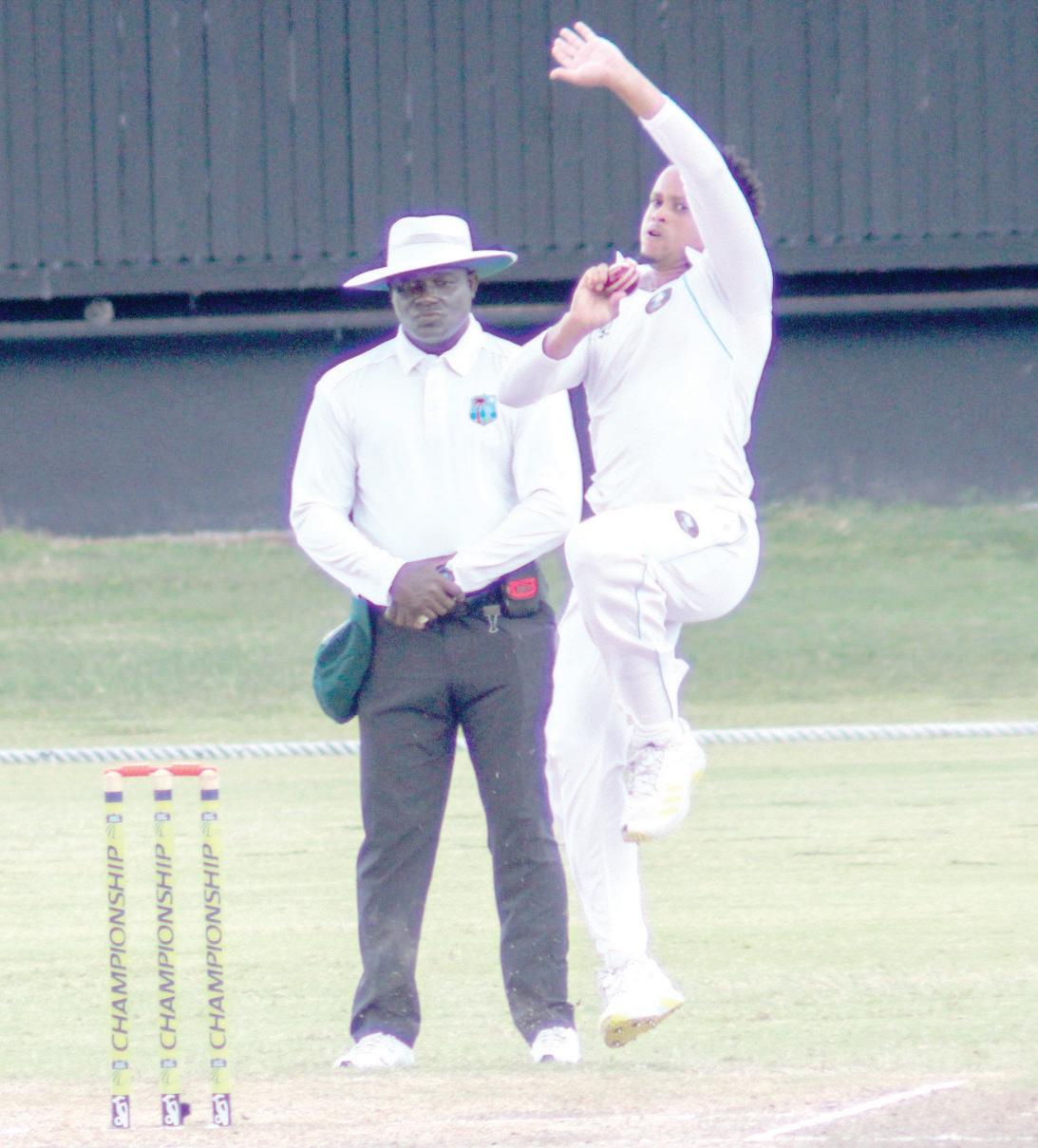
Shane Dowrich, who was unable to bat in the first innings due to illness, came and
went for a duck. He edged a quick Beaton delivery to first slip, and was caught by Leon Johnson to render the Pride score at 38-6 in 20.4 overs.
Smith continued to produce wickets as the Pride batsmen looked out of sorts before ending their innings on 94 in 35 overs. In addition to Smith's five-wicket haul, Beaton had 2-11 in eight overs and Permaul had 2-18 in eight overs.
Permaul shows fight with bat
Resuming the day on 918, Guyana Harpy Eagles declared their innings closed at 126-9 in 44.1 overs.

Marathon man Veerasammy Permaul was the wicket to fall for Guyana this morning, after he missed a Chaim Holder delivery and was cleaned up for
33 from 49 balls. Permaul added 36 runs with his fellow Berbician Nial Smith, who was unbeaten on 12 when the declaration came.
Akeem Jordan ended with 3-32 in 15 overs, while Keon Harding had 3-37 in eight overs for Pride.
At 10:21h, rain intervened with Guyana on 112-8, but played resumed at 10:38h. Guyana declared the innings at 10:58h.
Guyana will now play against Windward Islands Volcanoes from February 8 in Grenada.
Guyana 1st Innings
Chanderpaul Hemraj
lbw b McAllister 11
Matthew Nandu c Brooks
b McAllister 126
Tevin Imlach lbw b Jordan 0
Kemol Savory c Dowrich
b Holder 25
Leon Johnson c Jordan
b Holder 26
Anthony Bramble c Kirton b Jordan 20
Kevin Sinclair c
Brooks b McAllister 43
Veerasammy Permaul c
McAllister b Harding 37
Shamar Joseph lbw b Holder 20
Nial Smith run out 9
Ronsford Beaton not out 0
Total (10 wickets, 121.1)
(54 extras) 371
FOW: 30/1 (12.5) Chanderpaul
Hemraj 35/2 (15.4) Tevin
Imlach 80/3 (29.2) Kemol
Savory 126/4 (47.1) Leon
Johnson 163/5 (62.2) Anthony
Bramble 225/6 (84.1) Kevin Sinclair 315/7 (111.3)
Veerasammy Permaul 354/8
(117.1) Matthew Nandu
370/9 (120.3) Shamar Joseph
371/10 (121.1) Nial Smith
Bowling
Akeem Jordan (26-8-54-2)
Keon Harding (23-1-128-1)

Shemar Springer (17-5-46-0)
Jair McAllister (18.14-43-3)
Chaim Holder (36-15-72-3)
Nicholas Kirton (1-1-0-0)
Barbados 1st Innings
Zachary McCaskie c
Hemraj b Sinclair 26
Sheyne Moseley c
Bramble b Joseph 65
Jonathan Drakes
lbw b Permaul 0
Sharmarh Brooks c
Nandu b Permaul 51
Keon Harding b Permaul 24
Nicholas Kirton c
Bramble b Sinclair 2
Shamar Springer not out 35
Akeem Jordan c

Bramble b Sinclair 0
Chaim Holder c
Bramble b Joseph 13
Jair McAllister lbw Permaul 2
Total (9 wickets, 91.2)
(2 extras) 220
FOW: 69/1 (23.5) Zachary
McCaskie 70/2 (24.6) Jonathan
Drakes 102/3 (35.2) Sheyne
Moseley 159-4 (62.4) Harding
166-5 (65.5)Kirton
178-6 (70.5) Brooks
183-7 (71.4)
Jordan 213-8 (87.5) Holder
220-9 (91.2) McAllister
Bowling
Nial Smith (13-4-40-0)
Ronsford Beaton (13-2-28-0)
Shamar Joseph (15-4-33-2) Kevin Sinclair (24-4-65-3)
Veerasammy Permaul (26.2-4-53-4)
Guyana 2nd Innings
Tevin Imlach c Jordan
b McAllister 0
Matthew Nandu c McCaskie b Harding 16
Kemol Savory lbw b Jordan 0
Leon Johnson c Kirton
b Harding 12
Anthony Bramble c McCaskie b Springer 1
Kevin Sinclair c
Brooks b Harding 1
Chanderpaul Hemraj c Brooks b Jordan 15
Veerasammy Permaul
b Beaton 12
Nicholas Kirton c Bramble b Permaul 0
Shemar Springer c Bramble b Permaul 0

Shane Dowrich c
Johnson b Beaton 0
Akeem Jordan c Sinclair b Smith 20
Chaim Holder not out 6
Keon Harding c
Sinclair b Smith 7
Jair McAllister b Smith 4
Total (10 wickets, 36.0) (5 extras) 94
FOW: 5/1 (1.4) Sheyne Moseley 9/2 (2.3) Zachary McCaskie 30/3 (16.1) Sharmarh Brooks 35/4 (19.3) Jonathan Drakes

(19.5) Shemar Springer
(20.4) Shane Dowrich
(31.5) Akeem Jordan
(35.6) Jair McAllister
Shamar Joseph (7-3-21-1)
Nial Smith (10-2-31-5)
Ronsford Beaton (8-4-11-2)
Veerasammy Permaul (8-1-18-2)